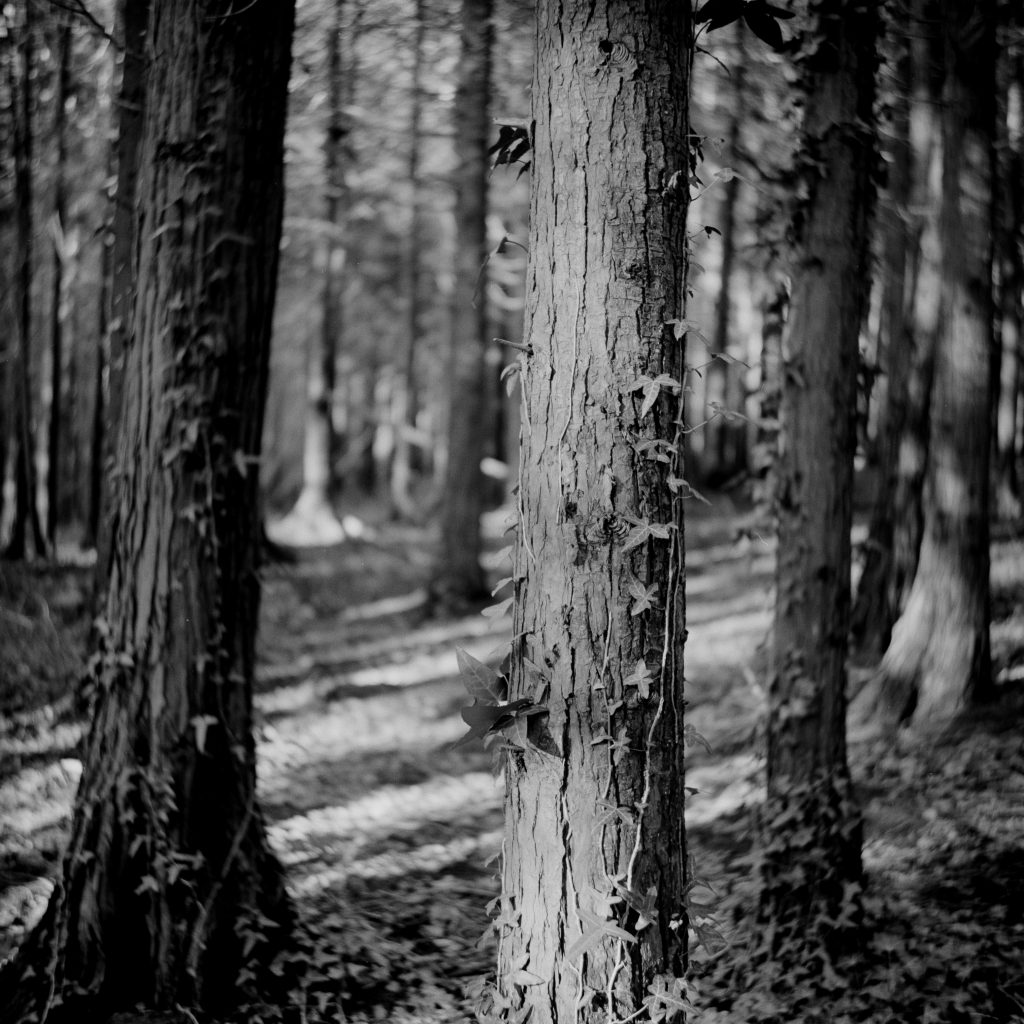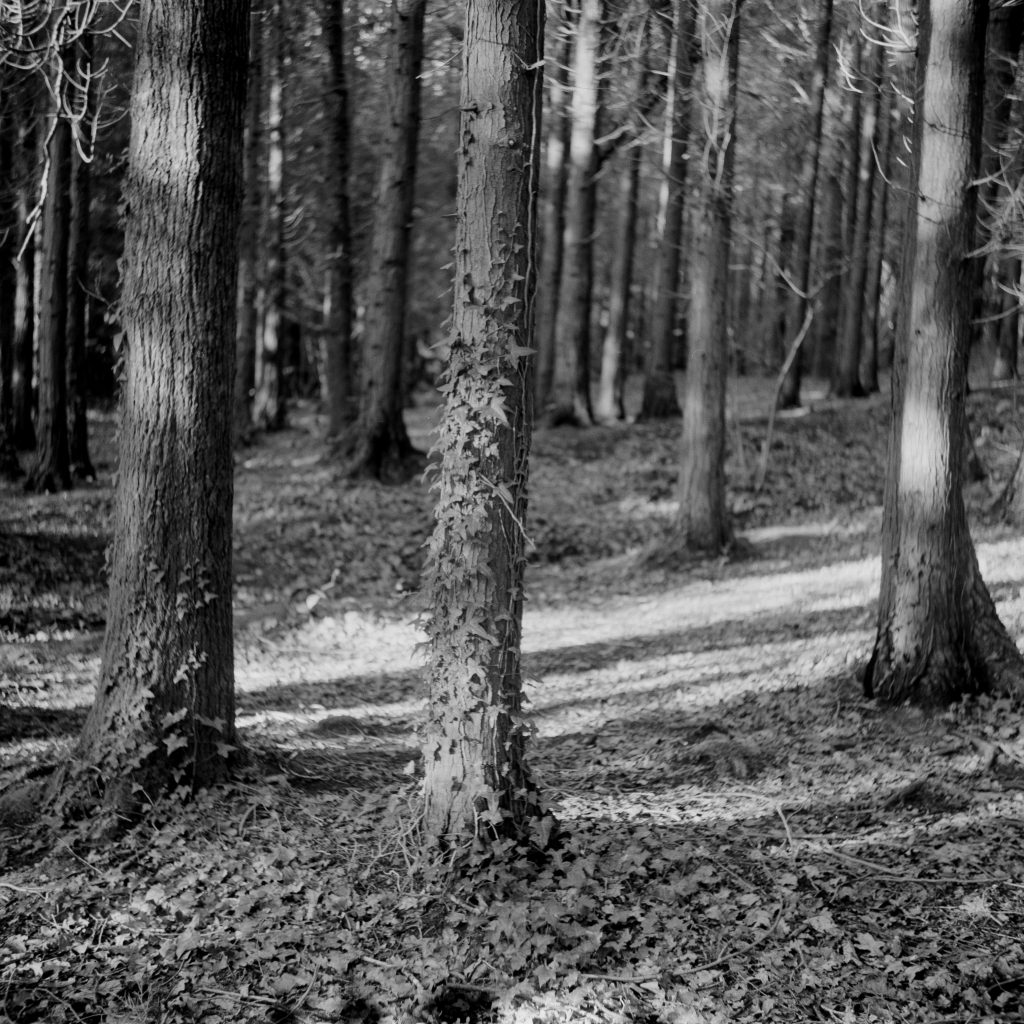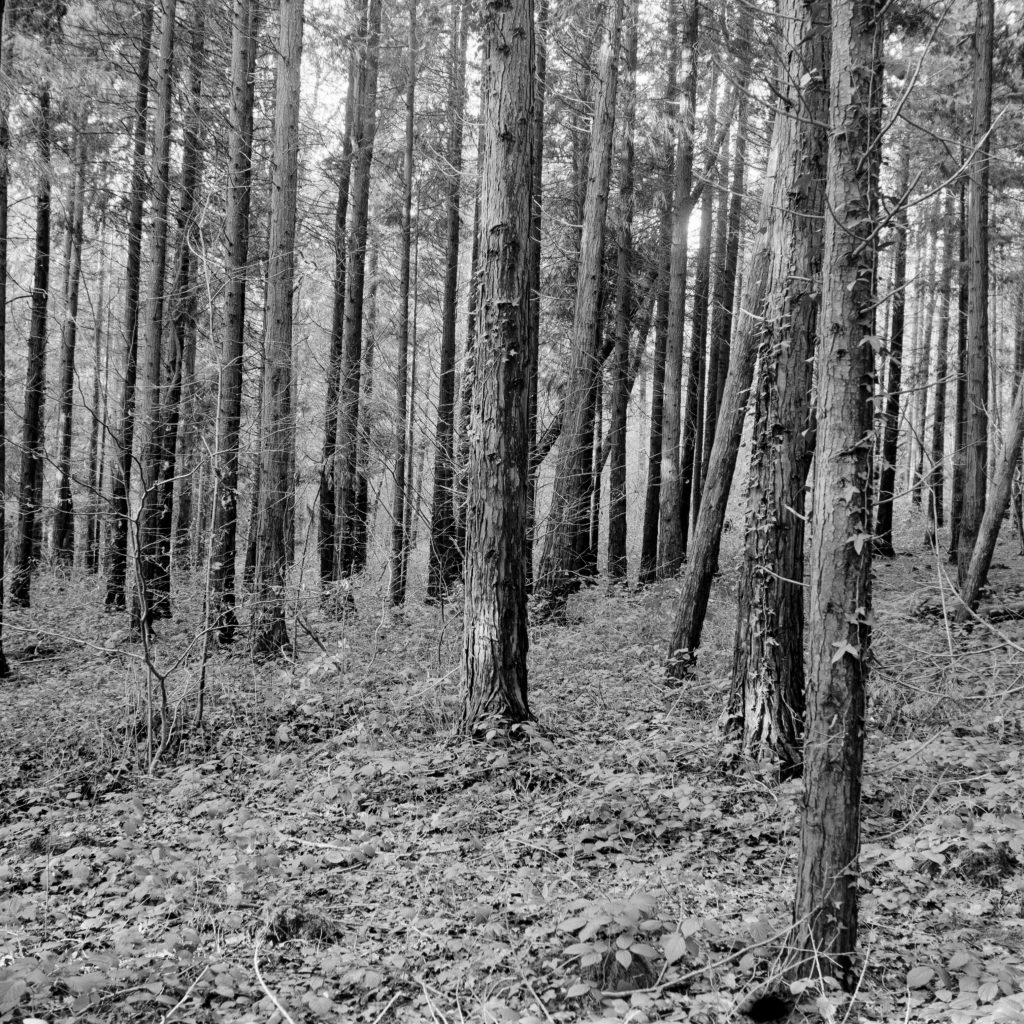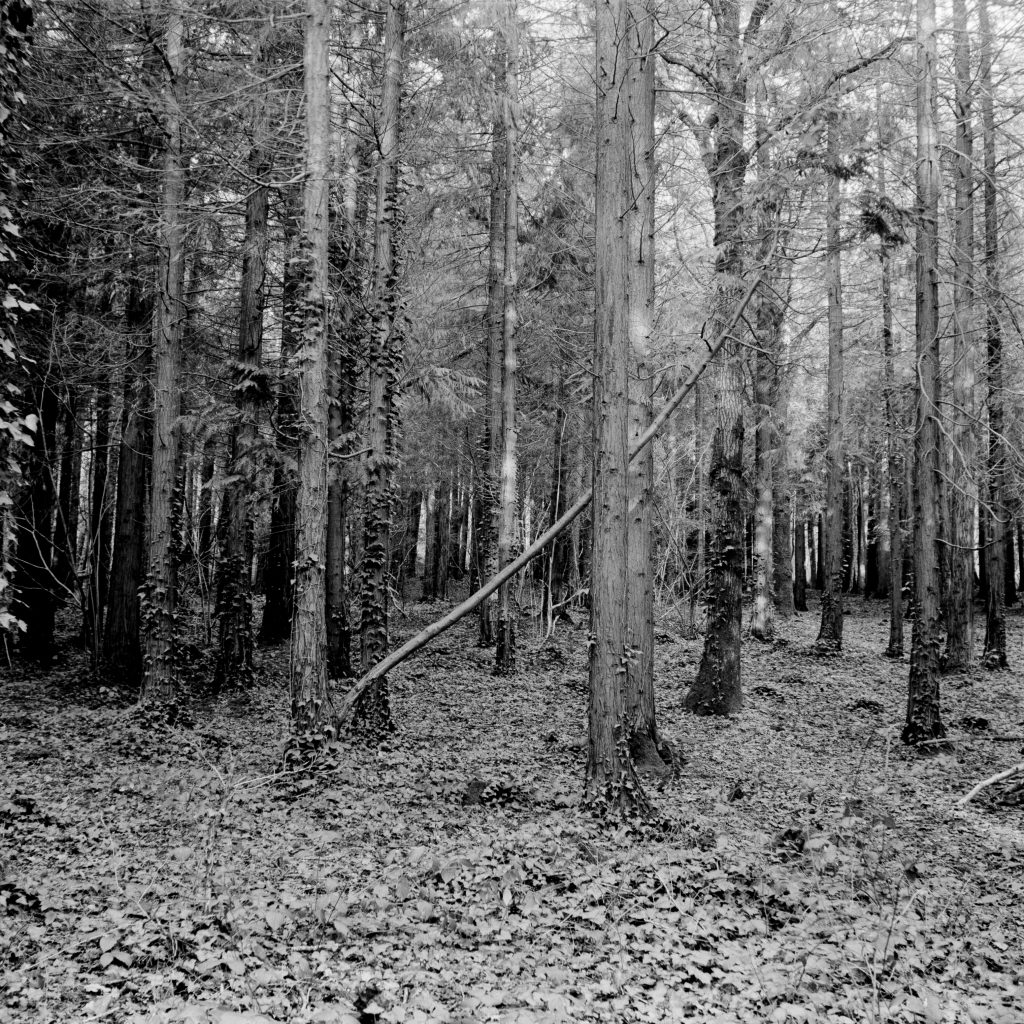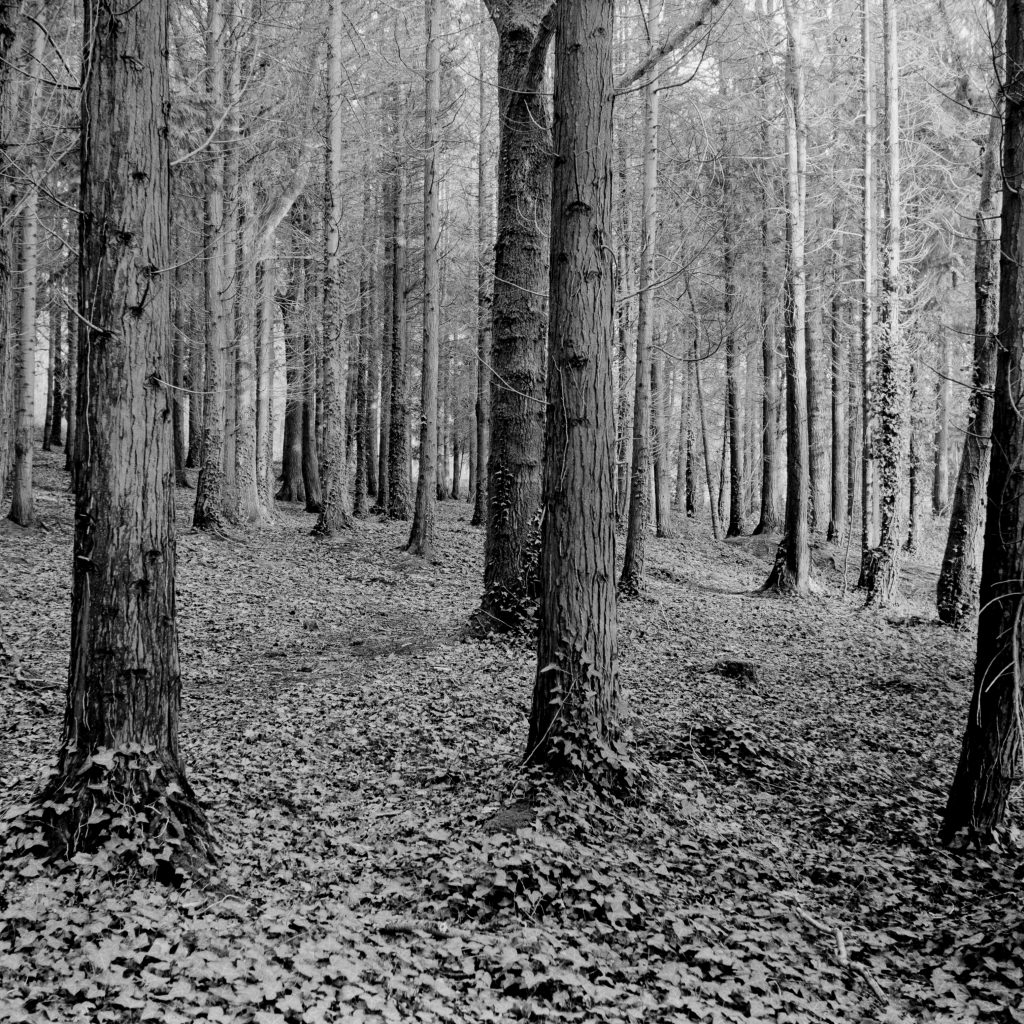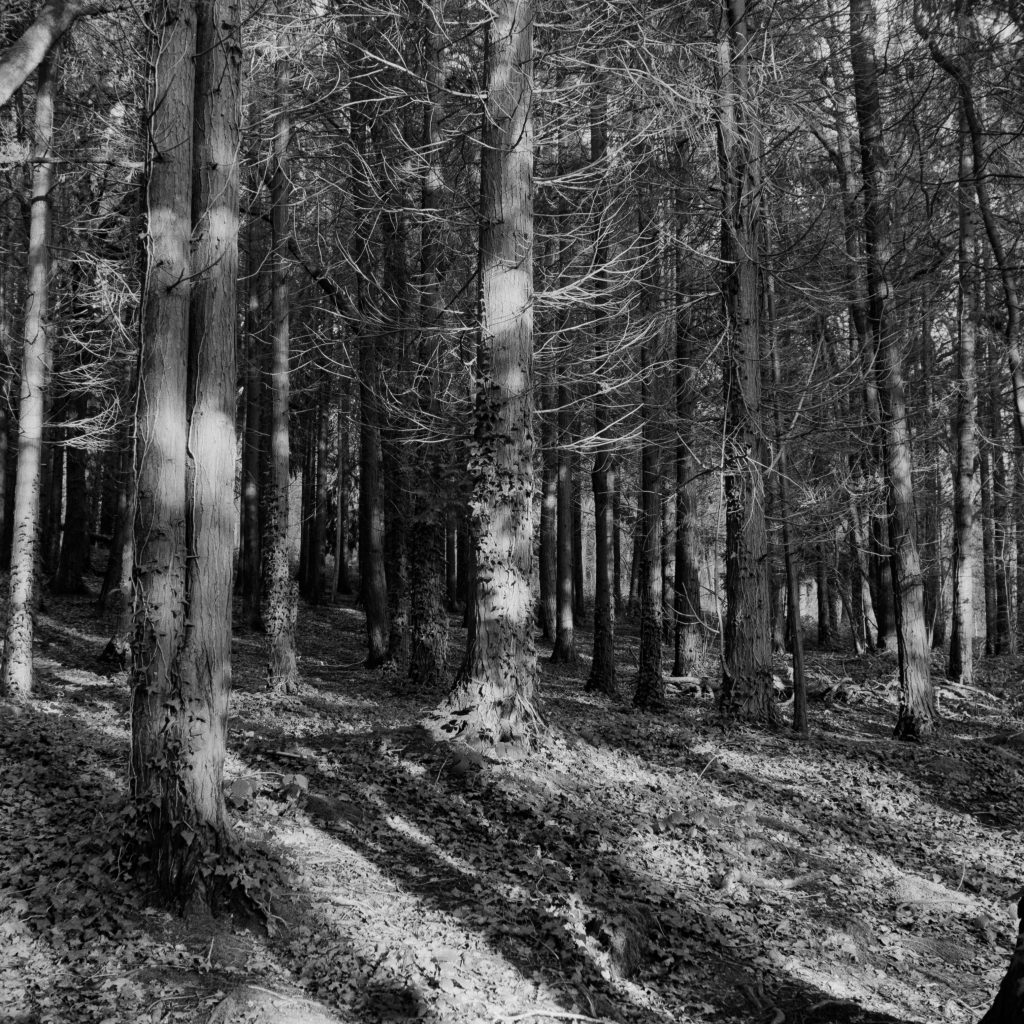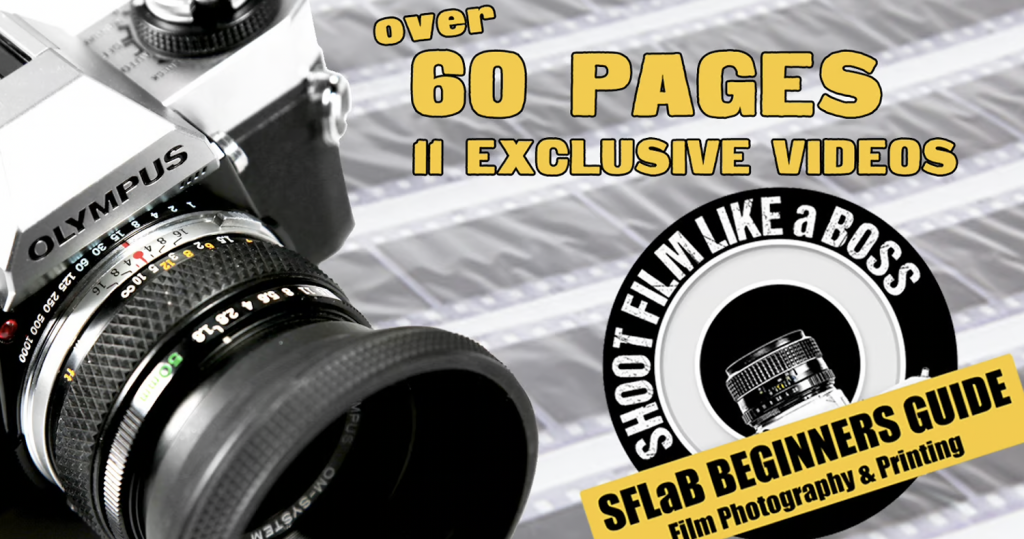The Forgotten Nikons!

Ever wondered what it was like to experience the dawn of autofocus in the film era? Look no further than the Nikon F-501 (also known as the N2020 in the US), a groundbreaking SLR camera that merged classic film photography with cutting-edge autofocus technology.
You can watch my video on the SFLaB channel here.
Nikon have been an absolute beast of a brand in the camera market and have probably dominated the way for amateurs and professionals since the 1960s. And when you look online now for used Nikon SLR cameras there are many that come up showing their full masculine bodies and buttons with a hefty price tag too… And rightly so! When you think of Nikon F, F2, F3, F4, F5, F6, FE, FM, FM3A, F100, they are all fantastic cameras that have rocketed in price on the used market over recent years. And if you ask someone to recommend a Nikon Film SLR one of the above models would more than likely be mentioned. But they are not the cheapest.
I have some other more undesirable Nikon Film SLR’s that are not mentioned above and possibly wouldn’t pop up in conversation talking with someone wanting to get into the Nikon system.
And one of those is the Nikon F501. A Nikon Film SLR camera that was introduced in 1986 and continued through to the early 90s. A camera that oozed bags of control and functions to excite any enthusiast of the day and even tickle the fancy of a few professionals that wanted to have a back up SLR in their bag.

A Revolutionary Step Forward
When it was released the F-501 was a game-changer. It was Nikon’s first SLR with integrated autofocus, paving the way for the future of photography. Imagine the excitement of having a camera that could automatically lock onto your subject – a feature we now take for granted.
Features That Defined an Era
- Autofocus System: The F-501 featured two autofocus modes: Single Servo AF (S) for stationary subjects and Continuous Servo AF (C) for tracking moving subjects. It worked seamlessly with a select range of dedicated AF Nikkor lenses.
- Exposure Modes: Like a true SLR, the F-501 offered Programmed Auto (P), Aperture Priority (A), and Manual modes. However, it also introduced a unique “P Hi” mode, designed to prioritize faster shutter speeds for action photography.
- Motorized Film Advance: Say goodbye to manual film winding! The F-501 boasted a built-in motor drive with single and continuous shooting modes, capable of capturing up to 2.5 frames per second.
- Automatic Film Loading and DX Coding: Loading film was a breeze with automatic film loading and DX coding for automatic ISO detection. Simply pop in your roll of film, and the camera would take care of the rest.
- Bright Viewfinder and Informative LCD: The viewfinder displayed essential shooting information, including shutter speed, aperture, and focus confirmation. A top-mounted LCD panel provided additional details like exposure compensation and frame count. The viewfinder is 92% so you can expect a bit more on your negative than you initially framed for.

(Not exactly to scale, I made this in photoshop but gives you the idea!)
- Ergonomic Design and Solid Build: The F-501 felt great in your hands, with well-placed controls and a sturdy build quality that Nikon is known for.
- Internal through the lens metering: The camera has a metering system that is partial metering and works very well indeed.
- Audio warning! Nowadays you have to go into the menu system to turn this function on and off but the F-501 has a switch on top of the camera. It bleeps a sound when the camera is out of exposure threshold.
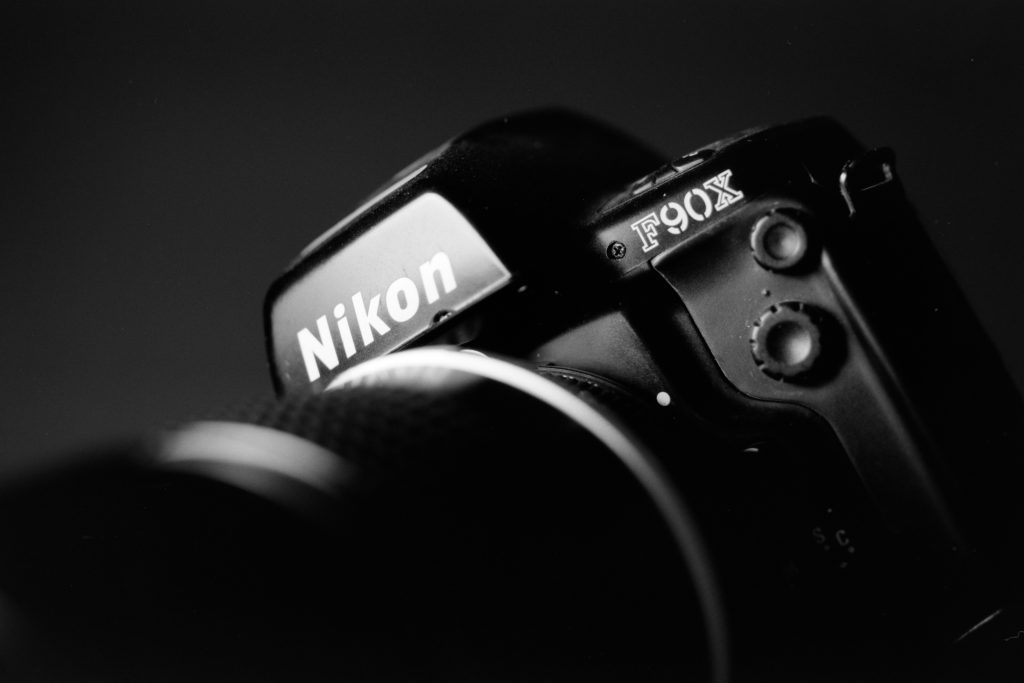
The F90X taken with the F-501 with Fuji Acros II Film developed in D23. 55mm Nikkor Micro Lens.
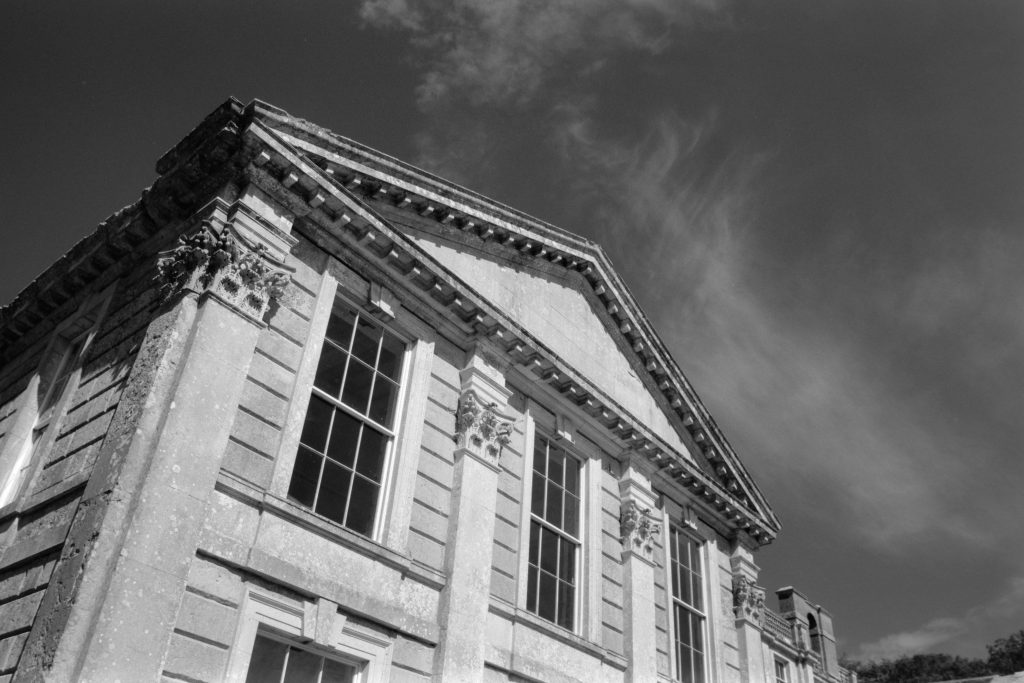
Appuldurcombe House, Isle of Wight, with Fuji Acros II Film developed in D23. 50mm Zeiss Milvus Lens.
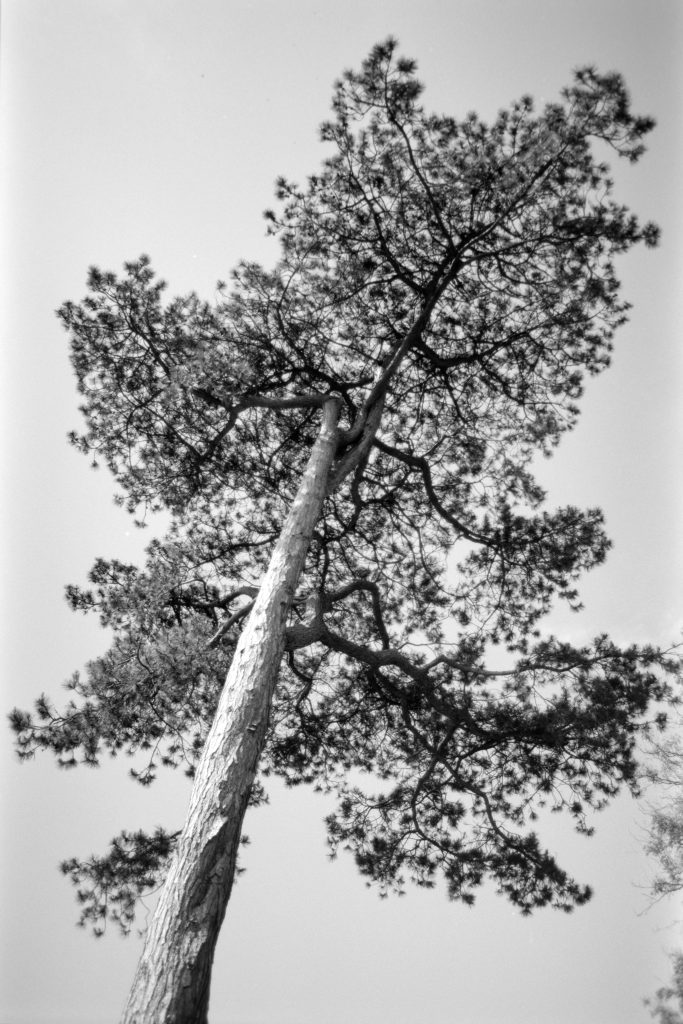

A bit too confident in my hand held abilities at 1/30th!
Why You Should Give the F-501 a Try
- Affordable Entry into Film Photography: The F-501 is often available at very reasonable prices, making it an accessible option for beginners.
- Unique Features: Experiment with the “P Hi” mode and dedicated AF lenses for a unique shooting experience.
- Nikon Quality: Enjoy the reliability and craftsmanship of a classic Nikon camera.
Conclusion
The Nikon F-501 may not be the newest kid on the block, but it represents a pivotal moment in photography. It’s a testament to innovation and a reminder that even older technology can be incredibly fun and rewarding to use. If you’re a curious photographer seeking a taste of the past, or simply looking for an affordable way to get into film, give the F-501 a shot – you won’t be disappointed.
And if you are looking to get into the Nikon system they are very affordable compared to other Nikon cameras leaving you with some cash for a couple of decent F mount lenses. Or a roll of film! Obviously price reflects the cosmetic condition! As you can see my one looks a bit shabby but that doesn’t stop it performing well inside.
They are fully electrical which means you need batteries to operate the camera. In which case you may find yourself without a camera if you don’t take spares! Luckily enough the camera takes AAA batteries which can be purchased almost anywhere on foot.
I’ve read in some cases the auto focus motor has packed up and the electrics fail but this one is still going strong since 1986! This can happen to any fully electronic camera of the same era and if this panics you then you may want to look for a different Nikon. A mechanical one. But for the price of these it’s worth a punt.
And if you’re a hands on sort of person and fancy tinkering there are some ‘non working’ cameras online for sale very cheap indeed which you can use for spares. But if you do buy a used camera online just ask all the necessary questions and if you can try and get a 30 day money back guarantee. Some sellers find these cameras in attics and know nothing of cameras. Always do your homework. But if you get one in good working condition then it should serve you well!

I was surprised at how much wizardry this camera packs in but I was surprised NOT to see a Depth of Field preview on the camera, which is a very useful tool to have.

A few more cameras I have used and are very good are the –
- Nikon F90X
- Nikon F-601
- Nikon F-801
- Nikon F55
- Nikon F80
PENTAX 17 Hands on Review

Is this the start of the Film Photography resurgence? I hope so!
Imagine if other major camera brands brought back film cameras! It’s a dream, but probably unrealistic. Demand would be limited, making them expensive. Yet, there’s hope!
- Nikon F7
- Canon EOS 2V
- Olympus OM24
- SONY 17
Thankfully, some brands are taking a chance. And Pentax, with Ricoh, has been developing the new Half Frame Pentax 17 compact film camera for years, which is exciting news. There are other new film cameras on the market too with Lomography and Alfie – a huge feat considering the challenges involved! Like the Rollei 35AF that is nearly with us.

This gives us hope that film photography isn’t lost. Maybe, just maybe, we’ll see a resurgence as more people discover the unique charm of analog photography.
Pentax 17 HF Camera
I was one of the first to receive the camera by Ricoh Europe in order to make a review, not only for the channel but also for Ricoh too. And I have to admit… I love it! So let’s show you the camera up close and some of the photographs I have taken with it so far..
Un Boxing!
Skipping quick through the unboxing on the SFLaB video, I was taken aback when the Pentax 17 first emerged from its plastic bag. The camera felt surprisingly light, especially compared to the hefty vintage models I’m accustomed to.
As I examined it, running my hands over its contours and settling into a shooting grip, two impressions dominated my thoughts: It was undeniably plastic, yet remarkably comfortable to hold. What was I expecting? A Spotmatic lookalike to come out of the box? This is 2024. Look at your TV!

But naturally, a modern camera like this will incorporate some plastic elements. The back door does feel a bit hollow when tapped, but overall, the construction feels decent and well put together. What truly impressed me were the metal base plate and top cover, lending a touch of durability. The buttons and dials exude a sense of quality with their smooth operation. Additionally, the leatherette front adds a touch of charm, elevating the camera’s overall feel. It’s well made. If you drop it it’s not going to fall apart, but hopefully you won’t and go and do what it does best. Take photos!
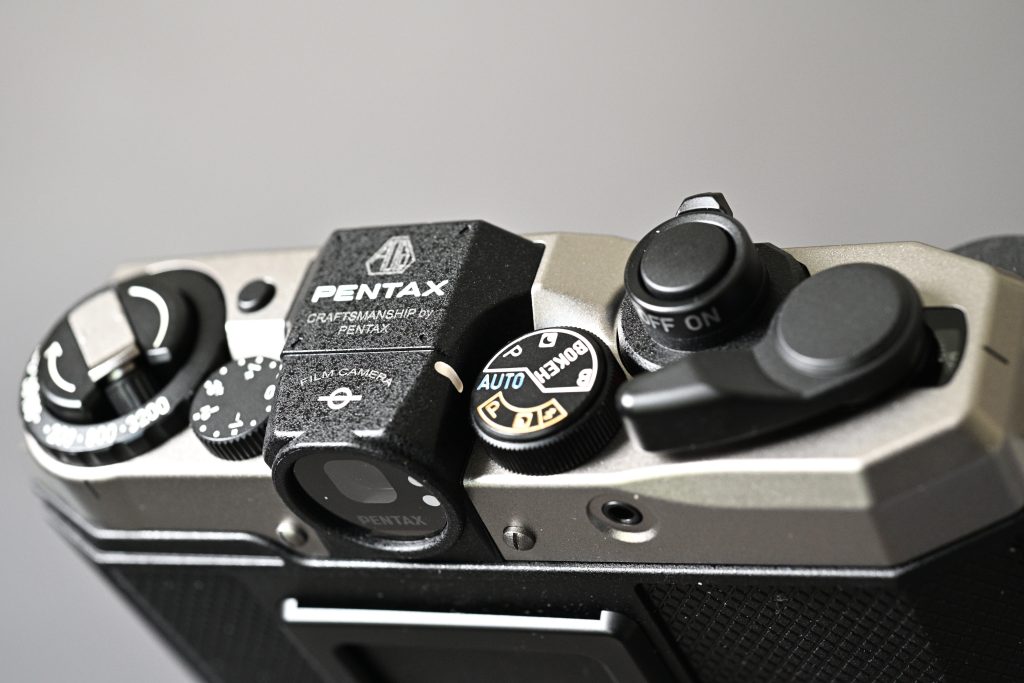
Half Frame

It is a half frame camera. 24×17. I have never really thought of shooting HF. It never attracted me. If I take photographs on film I want to at least have the prospect of toddling off into my darkroom to make some quality prints. And with HF I’d be compromising on quality. But having had this camera in my possession for a few weeks I think I understand its value. Getting double the amount of photos from a roll of film can’t be a bad thing if all you intend to do is scan and post and share online. You don’t need the quality of 35mm so I guess it makes sense and maybe that is the Market Pentax is aiming for.
I can see it would be ideal if I want to shoot film at the local car show or a mates wedding. Or maybe making smaller 5×7 Prints in the darkroom. At least my photographs will be cheaper. Of course it won’t replace my 35mm or Medium Format cameras but the option is there for some fun snaps on film.
Functions
Pentax has packed some impressive features into this camera. I was thrilled to see a built-in front flash instead of a pop-up one, which is a welcome design choice. The inclusion of an exposure compensation dial was another pleasant surprise. While there’s no dedicated exposure lock button, the compensation dial proves invaluable in situations with tricky lighting, like scenes with vast skies. It’s a clever workaround for ensuring proper exposure.

There is an ISO selector which speeds range from 50ISO to 3200ISO and a BULB mode too for timed exposures and a cable release socket which requires a CS-205 cable (not included). Hold up! What is included then? In the box you get a string wrist strap and a battery and a manual.
On the top of the camera is your mode selector jog wheel which boasts some decent functions – Here is a screen shot from the manual. But I will go through the modes.
I had to find out the hard way as when I received the camera the instruction manual was, well, let’s just say lacking some information! I now have the full manual which you can download from the Ricoh Website


AUTO Mode
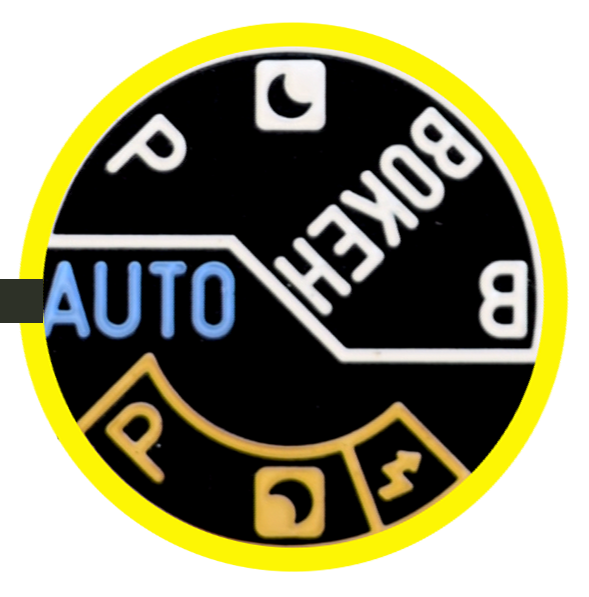
You can’t go wrong* in AUTO mode. Just select the speed of the film you are shooting (No DX Contacts) and fire away! The camera will control the aperture and shutter speed for a correct exposure by using it’s ‘Partial’ Metering system and if the scene needs a bit of extra light the camera will fire it’s flash.
The cameras shutter speeds range from 4 Seconds to 1/350th and the Lens Aperture is f/3.5. There is no indication with its smallest aperture but I suspect this to be f/22. And the Shutter and Aperture work in unison to give you the correct exposure for handheld photography.
*AUTO mode – If you’re less than a meter away from your subject. You can take the exposure but it won’t be in focus!
P Mode

If you don’t like flash then you can select “P” Mode. In this mode the camera will function the same as AUTO except the flash won’t fire. There is a Blue LED that blinks to tell you if you are over or underexposed before you take the photo. Shutter speed appears to be limited to 1/30th in this mode.
SLOW Mode
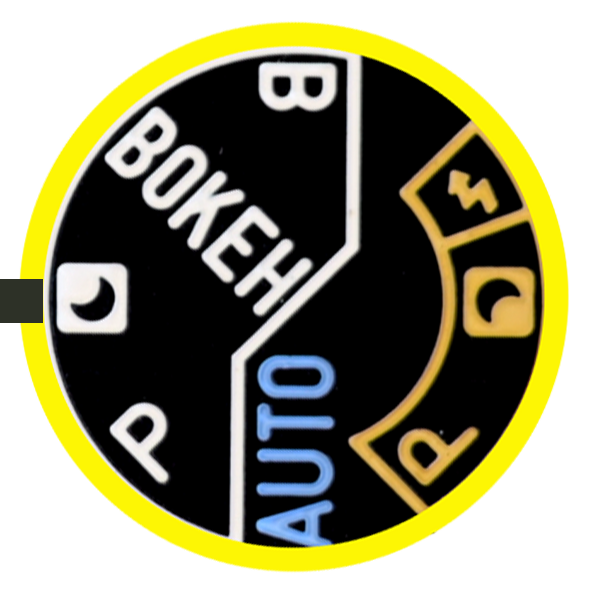
Slow mode is the white moon icon. This mode is ideal for tripod photography such as night time scenes where you don’t want the flash to fire and are looking for natural light or for wispy seascapes where you want some motion blur. Depending on the available light of your scene the most the shutter will stay open for is 4 seconds and will use its widest aperture (f/3.5). If after that the scene is still too dark the Blue LED will flash to tell you there is not enough light. You can still take the shot!
There is nothing in the manual that tells you how the Aperture and Shutter work together but I would imagine this camera is Aperture Priority (The camera chooses the smallest Aperture for the appropriate hand held shutter speed).
BOKEH Mode

It says in the manual that in this mode the aperture works at its maximum. Rightly so for BOKEH. But when I tested this by pointing the camera to the window in daylight the aperture closed down! I’m pretty stumped with this mode. Why didn’t the aperture open at f/3.5 and choose a faster shutter speed? I had the ISO selected at 50ISO. Oh well.
FLASH Modes (Yellow Area)
On the mode dial you will see two more modes in YELLOW. These two modes are ‘P’ Mode (Daylight Sync) and ‘SLOW SPEED SYNC‘ Mode (Moon). Basically one is a Program Mode where the flash will fire. And the other is ‘Slow Speed Shutter Mode‘, again, where the flash will fire regardless of the scene.
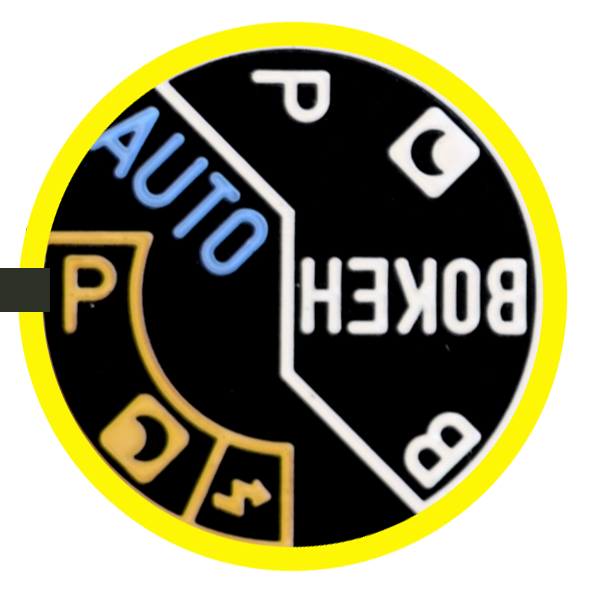
Yellow P Mode –
The flash is fired in for situations when the subject is backlit or in shadow. The shutter speed is up to 1/30s.
This could also be useful if you are photographing a party in a low lit room. The flash will fire, exposing your subject, and at 1/30th of a second to expose for the background also.

Slow Speed Sync –
When taking photos of a person against a dark background, the flash is fired at the person and the background is exposed using the slow-speed shutter. The shutter speed is up to 4 Seconds.
This mode could also be good for fancy trails after the flash has fired. Imagine taking a photograph of your friend at night in the street. Handheld. As the flash exposes your friend the shutter stays open after the exposure. Whip the camera in a circle motion and you’ll get street light trails.
BULB

When you are in Bulb Mode the Aperture will always be at its fastest, f/3.5. YOU control the camera so the metering will be disabled and so too will the exposure compensation dial and the flash too.
Indicators

On the viewfinder are two LED’s. One Red and one Blue and they tell you if –
- Under/Over Exposed
- Battery Low
- Camera Not Advanced
- Flash Charging
- Camera Too Close (Flower and Dinner Table Mode).

Shooting Struggles
I didn’t really have any struggles using the camera in various lighting conditions and it did the job well. Only one gripe here really is not knowing what my speeds were when taking photographs without the flash. Here is an example. These guys were in subdued light. I didn’t want the flash to fire so I chose ‘P’ mode and took the shot. I think it fired at 1/30th as you can see I have motion blur and possible handheld shake too. If the camera told showed me the shutter speed that would have been awesome! Yet, I don’t know how difficult that would have been to incorporate and I guess Pentax felt they didn’t need that. After all, not many point and shoots give this option!

The Lens
The lens combines elements of vintage cameras from RICOH and PENTAX. From the RICOH Auto-Half, it was possible to get an ideal/comfortable focal length the same 25mm.
From the PENTAX ESPIO mini, the optical design was used as a reference for sharp and clean images Using a triple element lens.

The lens also features HD coating, which maintains high performance of the lens, by using PENTAX multi-coating. This also enables high contrast and high definition right to the edges. It has an SP coating (Super Protect) which helps to repel water and oil from the lens. And my photographs go to show how good the lens is. Sharp from the centre to the edges and nice contrast.
I really expected the camera to roll out with a 35mm or 28mm lens.
Shooting
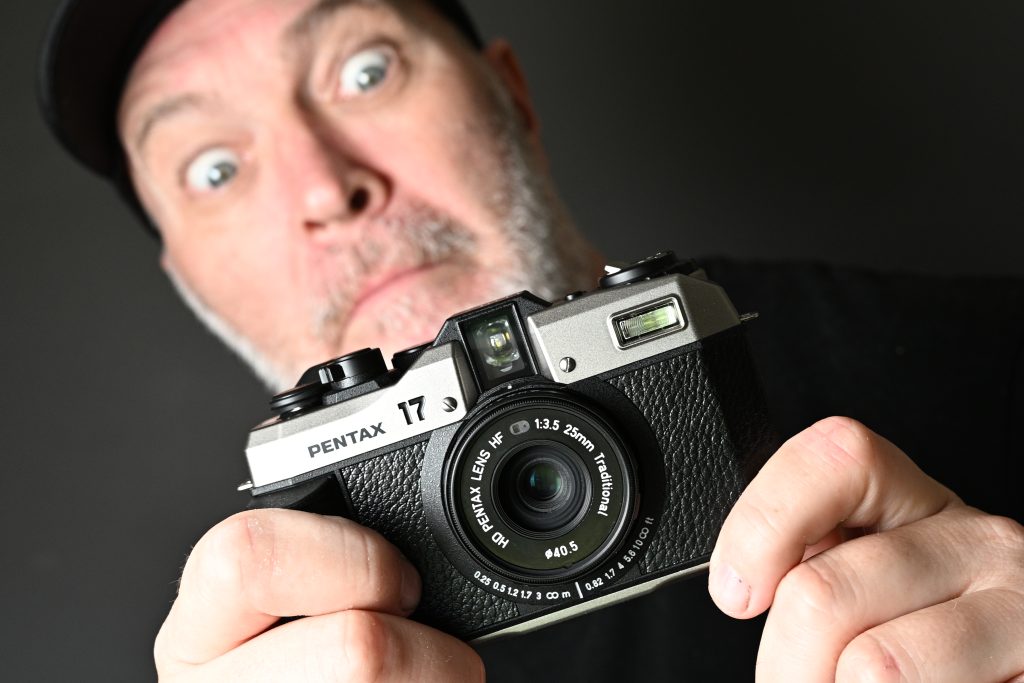
Never having owned a half-frame camera before, I was unsure if I’d enjoy the experience. But after shooting just two rolls of film, I found myself surprisingly delighted. The Pentax 17 is a no-nonsense camera that delivers accurate exposures with minimal fuss. Usually I am wandering with large format gear or my Mamiya RZ67 and other heavy 35mm cameras and lenses. This camera was small enough to slip into my pocket, a bit like my experience with the Rollei 35LED camera. Which is ideal for street photography.
Sure, while half-frame photography might not be ideal for printing large, high-quality images, it’s not about that. The Pentax 17, and other half-frame cameras, excel at something else entirely: pure, unadulterated fun.
Think about it – a 36-exposure roll magically transforms into 72 shots, and a 24-exposure roll gives you a whopping 48 opportunities to capture those fleeting moments. It’s the perfect tool for documenting everyday life, snapping candid photos of loved ones, or simply experimenting with a different format.
And let’s be honest, in the age of social media, most photos are viewed on screens anyway. The Pentax 17‘s half-frame format is perfectly suited for sharing your adventures online, without sacrificing any of the joy that comes with shooting film.
I went to Haven Street Steam Railway. There is plenty there to shoot! I found myself in that slow frame of mind, taking my time and being selective over my subjects and compositions and then remembered I had 48 photos to shoot! I was running out of ideas and then thought, ‘just shoot the S*** out’ of it! So I did!
Here are some of my results from shooting ILFORD HP5. The films were developed in my home made D23 Developer, rotary processed for 8 minutes.
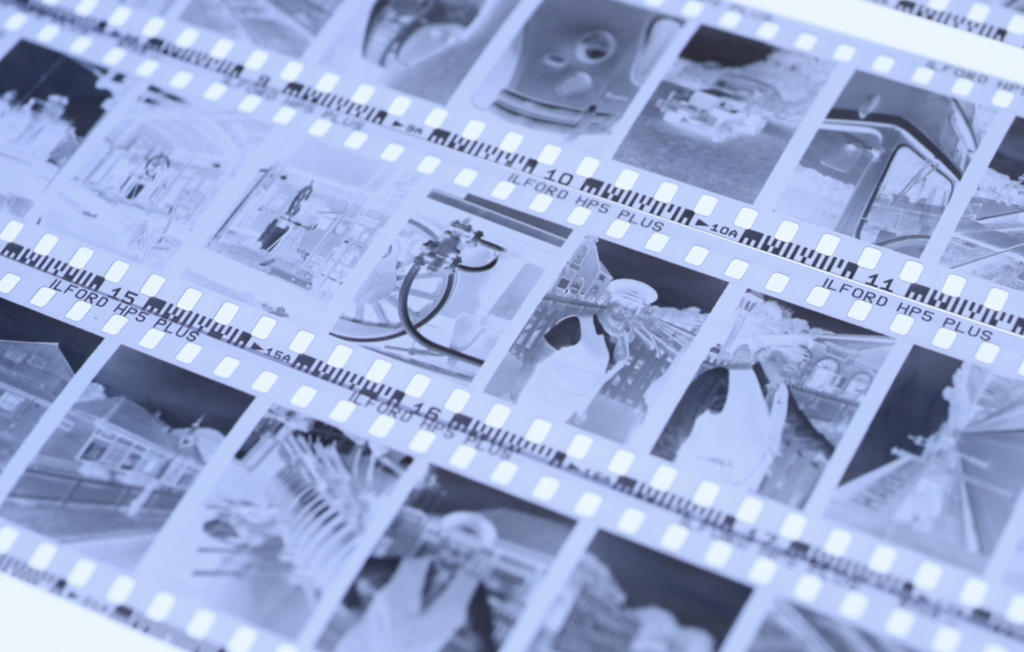


VIEWFINDER
The cameras viewfinder is very nice indeed, bright and accurate but I did find the guidelines a bit faint when the scene was bright. But it didn’t spoil the fun. It’s not glass.
I wasn’t accurate with some as you can see from the top photograph with a bit of a wonky line. There are two guides, one for normal distance and one for close up. It’s pretty accurate though! You can also see what focus mode you’re in. As you can see at the bottom of the illustration. Mountain!

The viewfinder also seems to be very accurate for composing such as this portrait I took of my daughter in my studio. I used static model lights for this photograph. (APX 100).

And another I took using the cameras flash.

FOCUSING
The camera has the usual suspects of focusing modes, however, it also includes a distance scale too which is very handy indeed for Zone Focusing.

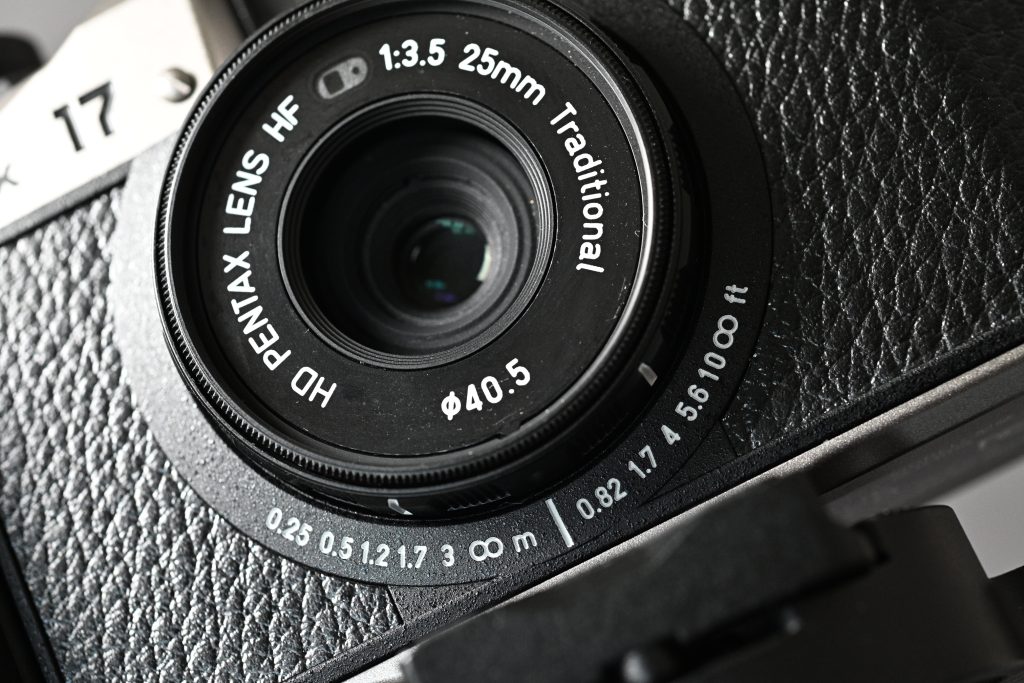
Here are the focusing icons and their respective distances from the manual.

In conclusion, Pentax has crafted an impressive camera with the 17. It’s sure to resonate with film photographers seeking a fun and accessible entry into the world of half-frame photography. While some may bemoan the lack of Pentax’s signature heavy metal construction, it’s important to remember that the joy of film photography lies in the experience itself.
The anticipated price of £450-£500 may raise some eyebrows no doubt, but it’s worth considering the factors at play. Engineering and design costs, wages, marketing, paperwork, investment, components, and materials all contribute to the final price. Additionally, the limited sales market, excluding mainstream retailers like Argos or Walmart, further justifies the cost.
Ricoh/Pentax are unlikely to price themselves out of the market. While the estimated cost might seem high to some, it’s important to remember that this isn’t just another point-and-shoot. We’re talking about a unique, innovative film camera with a design and feature set that caters to a specific audience. For those who value the tactile experience of shooting film, the doubled frame count, and the Pentax brand legacy, the price might be entirely justifiable. And for those who don’t fancy Half Frame you’ll just have to wait and see what Rollei have up their sleeves.
Ultimately, it boils down to personal preferences and priorities. If you’re someone who cherishes the tangible nature of film photography and seeks a fresh, exciting tool to capture memories, and don’t mind shooting Half Frame then the Pentax 17 could be a worthwhile investment.

Not too long ago, we questioned whether film would ever see innovation again, let alone new cameras, films, and chemicals. The Pentax 17 is a testament to the resilience of the film community and a promising sign of exciting developments to come. Let’s embrace this new era of film photography and celebrate the creativity it fosters.
Photographs show Ilford HP5 unless otherwise stated.
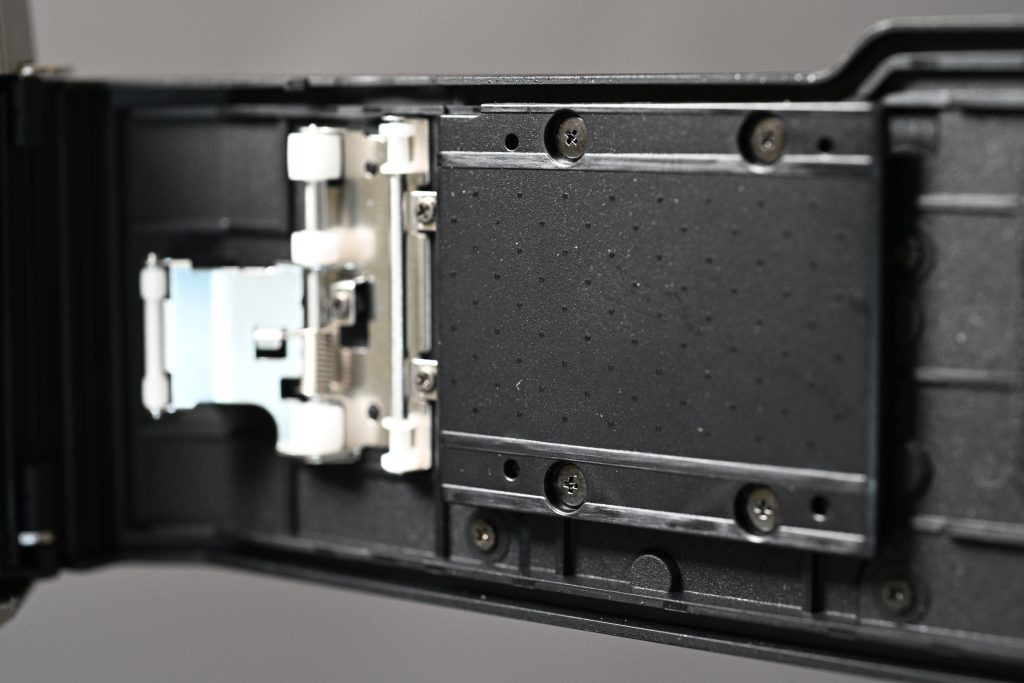
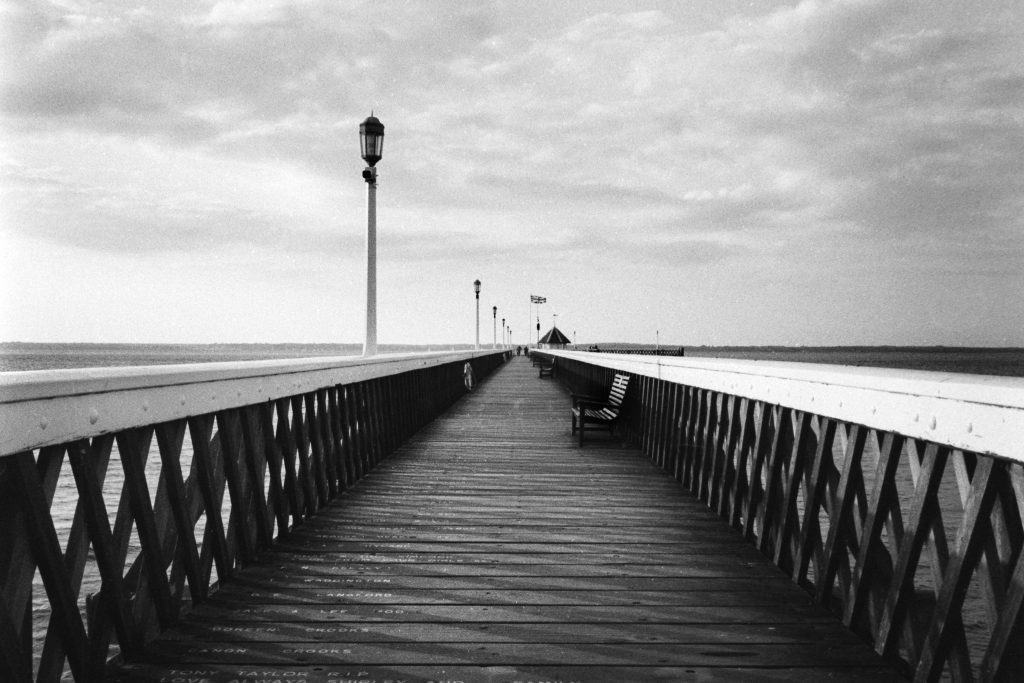


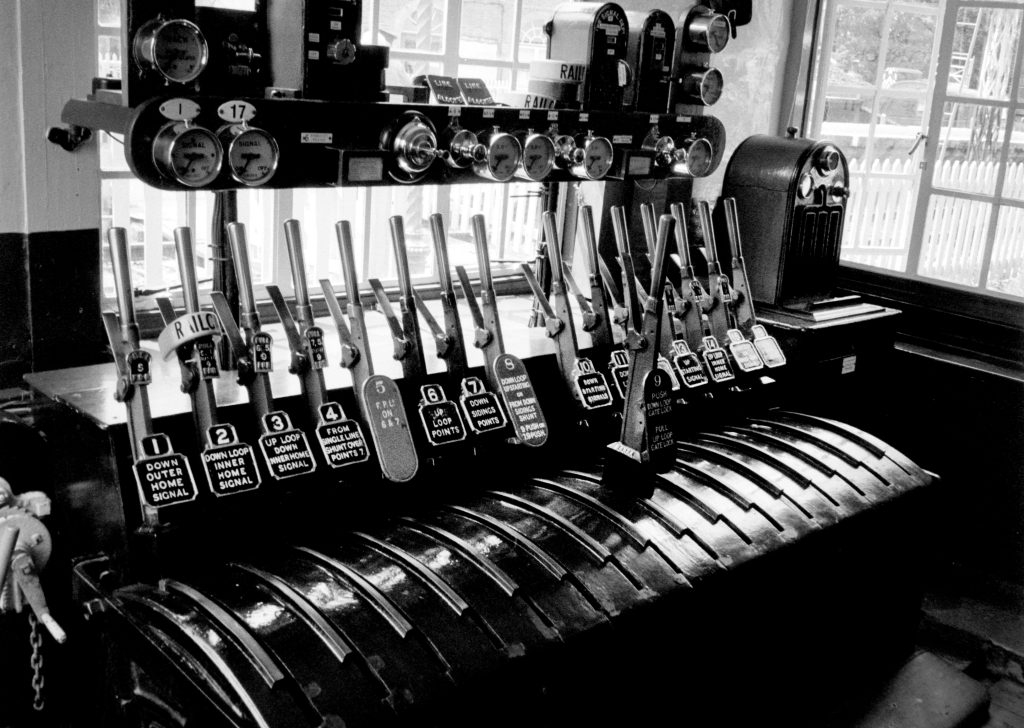
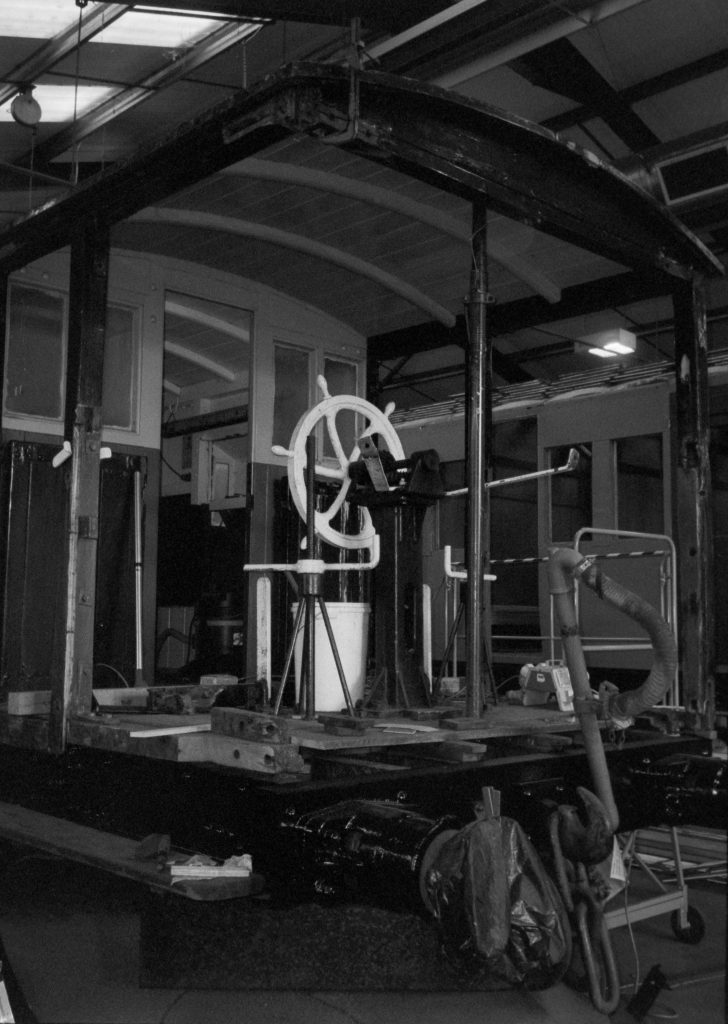
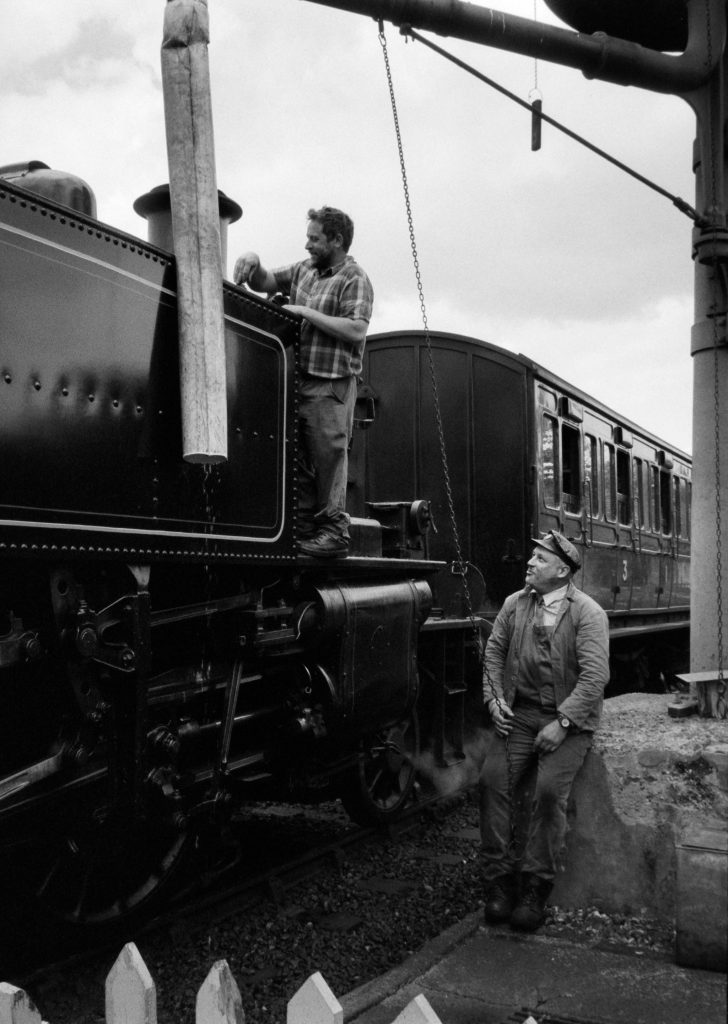

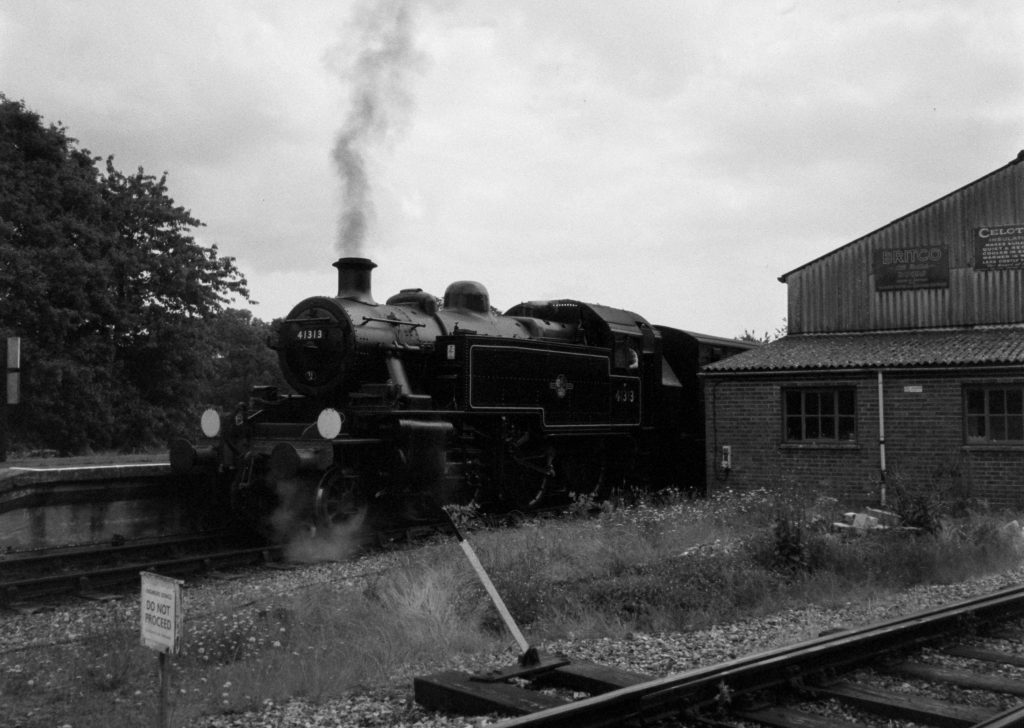
AGFA APX 100
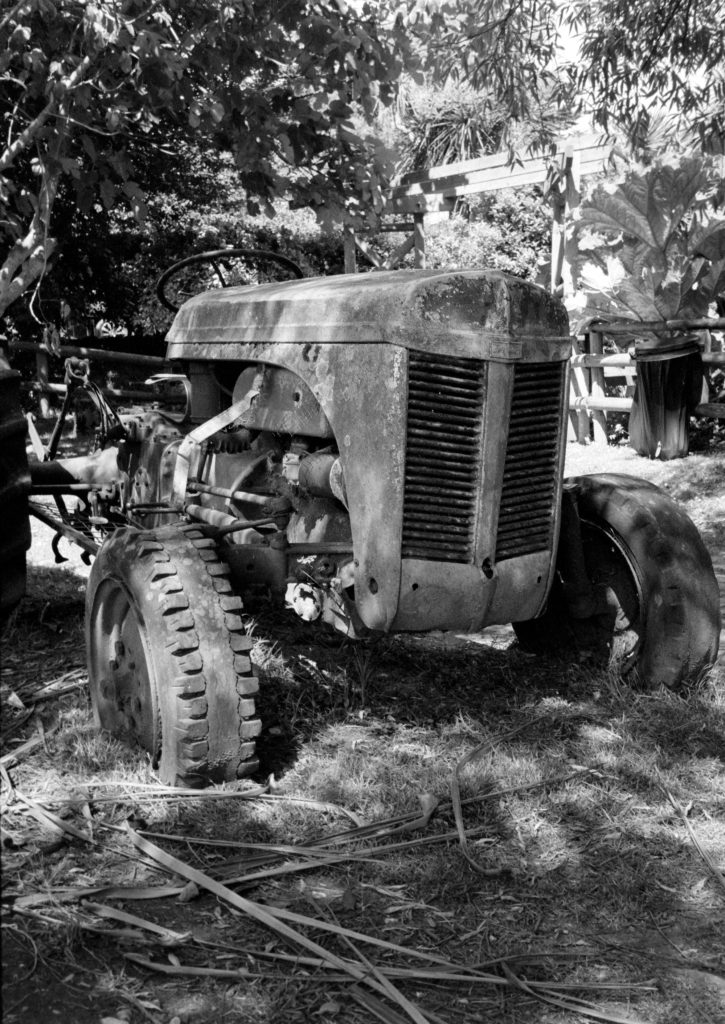
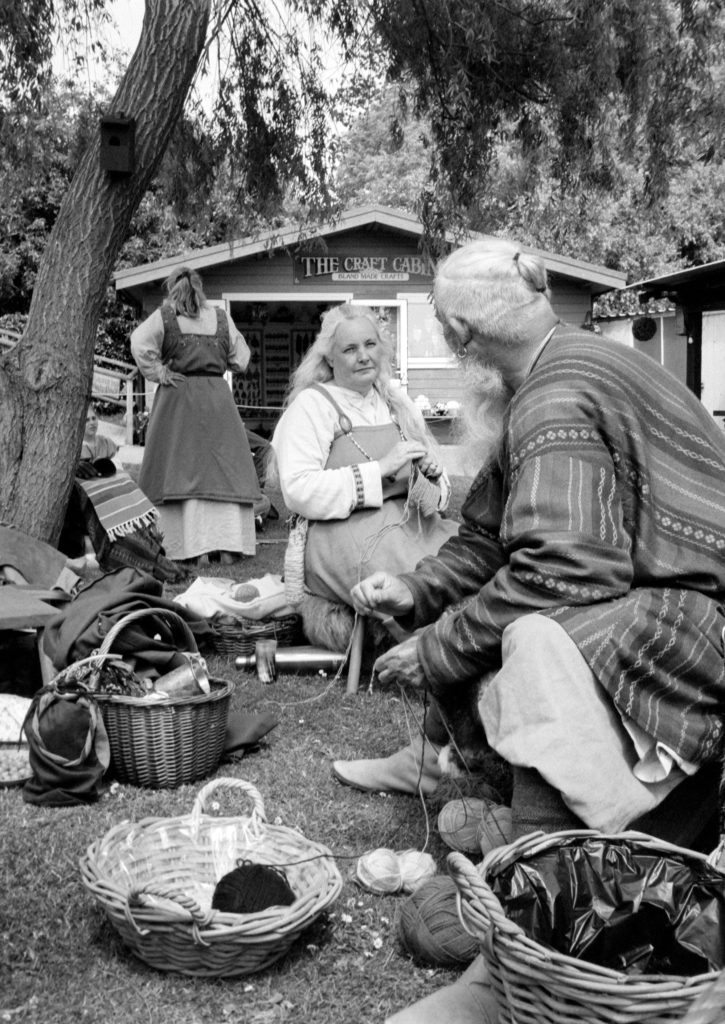


If you read this to the end then thank you for reading. I am in no financial affiliation program with Ricoh/Pentax and so these views are my own without influence.
Cheers!
Roger.
Pentacon SixTL Care
Pentacon Six TL Curtain Shutter Burn
Having been the proud owner of a Pentacon Six TL for some time it is a camera I really enjoy shooting but it is not without it’s common problems and one recently I discovered that could be costly to repair!

I was making a Vlog for the channel. You can see the video here.
I stopped and place my camera bag down, opened it and got my Pentacon SIX TL out of the bag intending to pick it up and show on camera. I placed the Pentacon on top of my bag with the lens pointing up toward the sky, not intentionally and for no reason other than I was going to pick it up a few moments later to show the camera on video. This was before I had taken a single photograph.
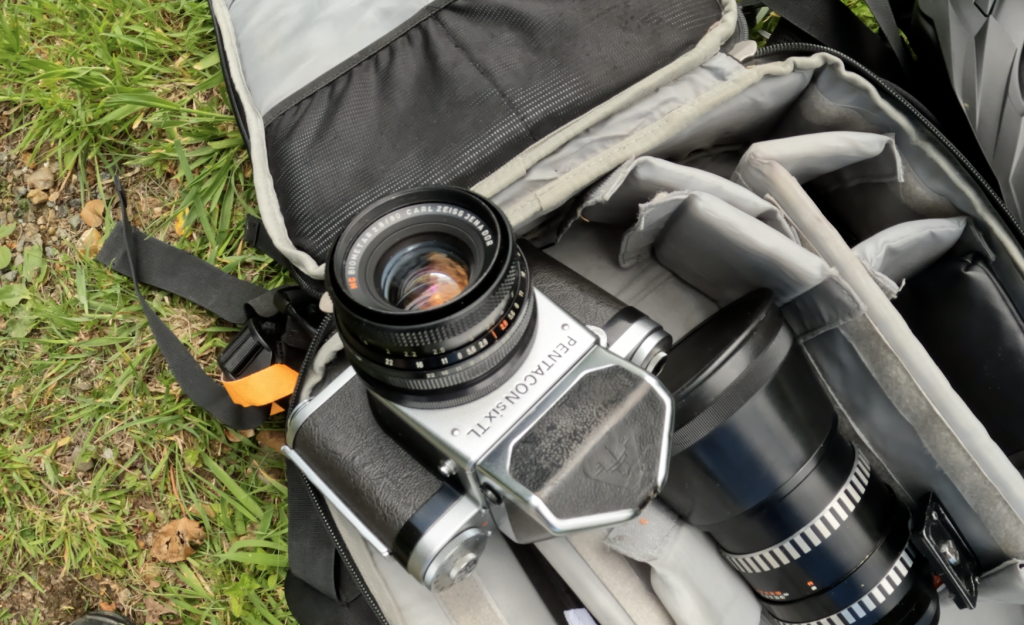
The fact that I was making a vlog at the same time contributed to this error but in a similar situation anyone may possibly put the camera down like this for a number of reasons during a shoot.
As the camera was staring up at the sun the lens acted like a magnifying glass and burned a pinhole into the cloth shutter behind the Lens.


I only discovered this after the shoot when I developed the film. I noticed I had a light leak.

It took me a while to investigate how this happened and it was only after I returned to the video footage I could see the curtain was fine when I loaded the camera with film. So something happened after that and that is when I noticed I had left the camera pointing up toward the sun!
This is typical for Leica cameras and Fed cameras because there is no mirror inside the camera to protect the cloth curtain. And you may think because the Pentacon Six is an SLR camera (With a mirror) the mirror sits between the lens and the curtain and protects the curtain from this apparent disaster. But with the Pentacon Six the mirror only comes down between the lens and the curtain when it is advanced. If the camera is not advanced the mirror stays UP and if the camera is pointing toward bright sun at the right angle (and no doubt aperture also plays it’s part, I was at f8) the sun will magnify through the lens and burn a hole in the curtain.
How to fix it.
The best way really is to have the curtain replaced by a professional camera engineer. But that can be costly. Luckily I have a sheet of Silk shutter cloth so I cut a small square piece and using fabric glue just placed it over the pinhole making sure it was perfectly flat and sealed in all corners to prevent it lifting.

It looks messy I know! But I didn’t want to damage the cloth any further by trying to pick away at the excess glue. And after testing the leaks have now gone. The patch clears the shutter flow as it is advanced and fired and also doesn’t scratch the film. So I will leave the camera like this and observe the repair each time I shoot the camera.
Another way you can temporarily repair such damage is by using Liquid Rubber and dabbing it to seal the hole.
Or if you want to try my way with a patch and don’t have a sheet of curtain (Why would you!) you can always look for a damaged camera online that is cheap and has a cloth curtain and cut a patch from that curtain.
The best way to avoid all this is not to leave the camera pointing toward the sun without a lens cap on! Or get into the habit of advancing the camera after each exposure. That way the mirror will advance between the lens and curtain protecting it. (WARNING: Check your cameras manual about changing shutter speeds after advancing. The TL Manual says you can change speeds before or after advancing)

It appears to happen when the camera is staring at the sun for a longer period of time as apposed to generally walking around looking for compositions so don’t let it put you off your normal workflow. Just be mindful not to let the camera stare at the sun too long when it’s placed down out of use with the mirror up!
Advance Lever
Another issue I came across was the advance lever working itself loose! Mine actually came off the camera as I was talking into camera and fell onto the floor! Luckily I found the three parts and simply screwed the lever back onto the camera.


The only other things I can mention bout this camera is to treat it like a baby! No rough handling. For example when you advance the camera don’t let the advance lever snap back. Gently feed it back with your thumb. Rough handling here can cause the internal components of the camera to fail.
So there you go. A bit of hands on experience with the camera that I hope will help others.
Film Ferrania P33

Film photography enthusiasts, rejoice! Film Ferrania, the resurrected Italian film manufacturer, has added another gem to their lineup – the P33, a black and white film with a unique character.
This is what I read up about the film.
What Makes P33 Special
- Fine Grain & Detail: The P33 delivers beautifully fine grain, allowing for incredibly detailed images. This makes it perfect for capturing intricate textures and subtle nuances.
- Tonal Range: Expect gorgeous tonality, with smooth transitions and a wide dynamic range. Your photographs will have a beautiful depth and classic black and white aesthetic.
- Improved Usability: Unlike its predecessor, the P30, the P33 is designed specifically for easier development and printing, giving you more flexibility in the darkroom.
- 160 ISO Versatility: The medium speed of ISO 160 makes the P33 suitable for both sunny outdoor scenes and well-lit indoor situations, providing a great balance.
And I was lucky to get my hands on a few rolls from The Little British Camera Company
I was eager to try this film out having shot many rolls of the popular P30 Motion Picture Film that Ferrania have had out for many years now and see if P33 was similar. In that I mean if it is as contrasty as P30.
And here are tow YouTube Videos I put out recently using this film:

For my first roll I used Rodinal and I had to do some tests first as on their data sheet Ferrania recommend 1+25 for 5 minutes. I thought that was a bit short for a 160 ISO Film, and after doing some tests I was happy at 10 Minutes. Double the time they suggest. My 5 minute tests were very thin.
As expected good ole Rodinal tells no fibs and I was greeted with nice negatives, easily printable and with a pleasing grain for the photography I was shooting, Street.

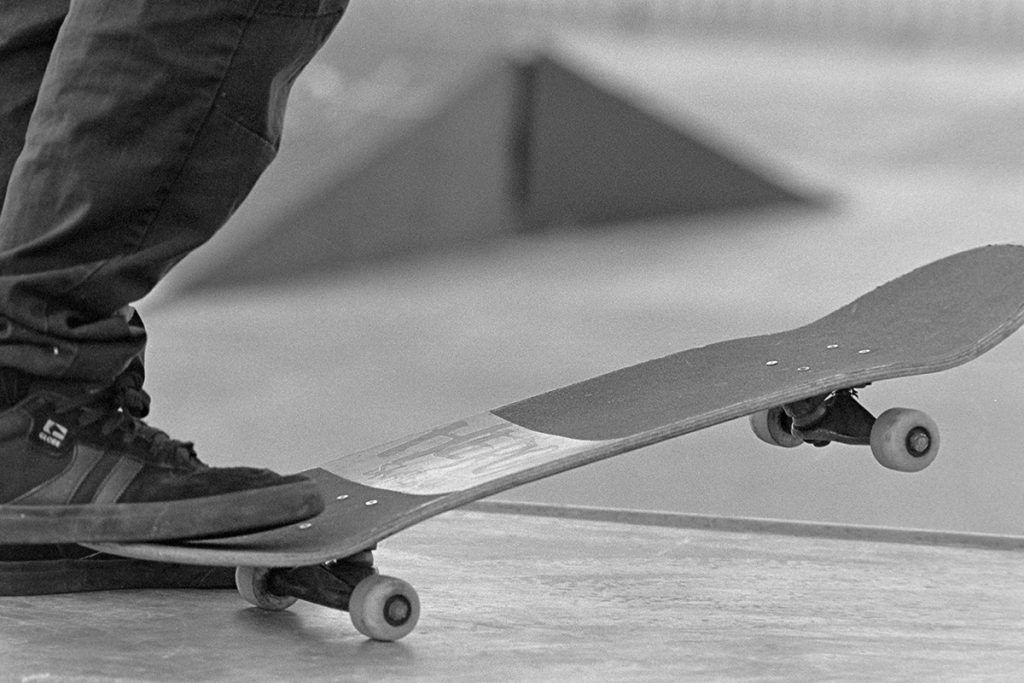
I didn’t find the contrast as punchy as their P30 Film, except when I shot my second roll at the local farm I used the Rotary Processor. Ferrania recommend Hand Process only for this film. And I used a new developer that I am testing at the moment from Zone Imaging (due to be released soon).
Rotary Process:



Noting the contrast, which was more evident on the negatives I shot another roll and used the same developer with a bit more time and this time hand developed the film. I managed to get much better detailed negatives, still with contrast, but with more detail. And as for the grain, it’s very fine indeed!
And you have to excuse me for not printing these negs and others recently. The Darkroom is a tad bit damp!
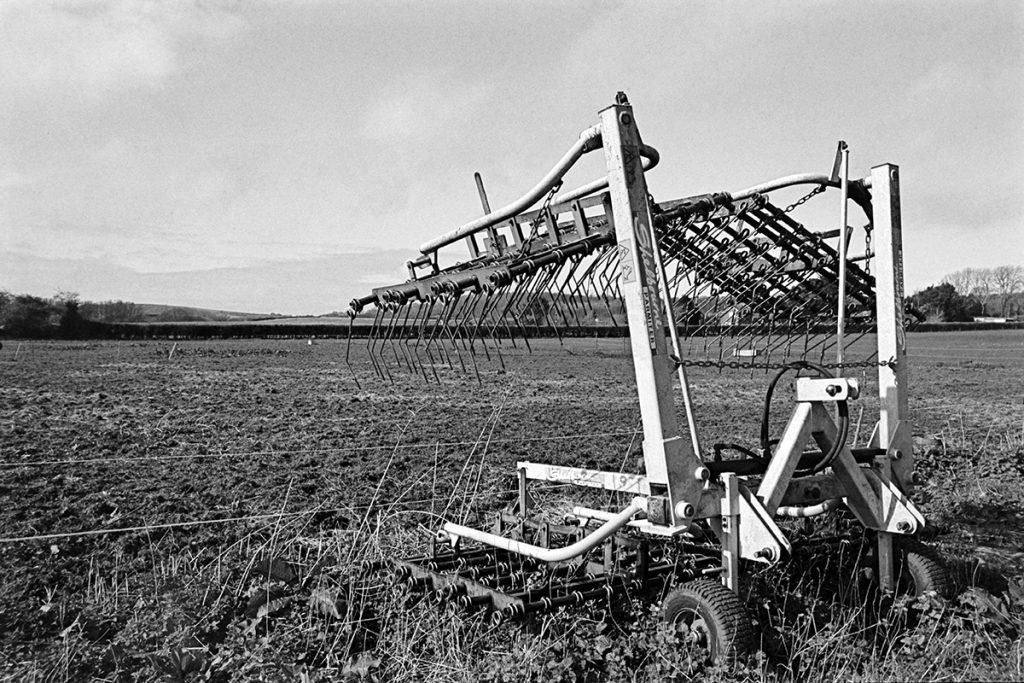

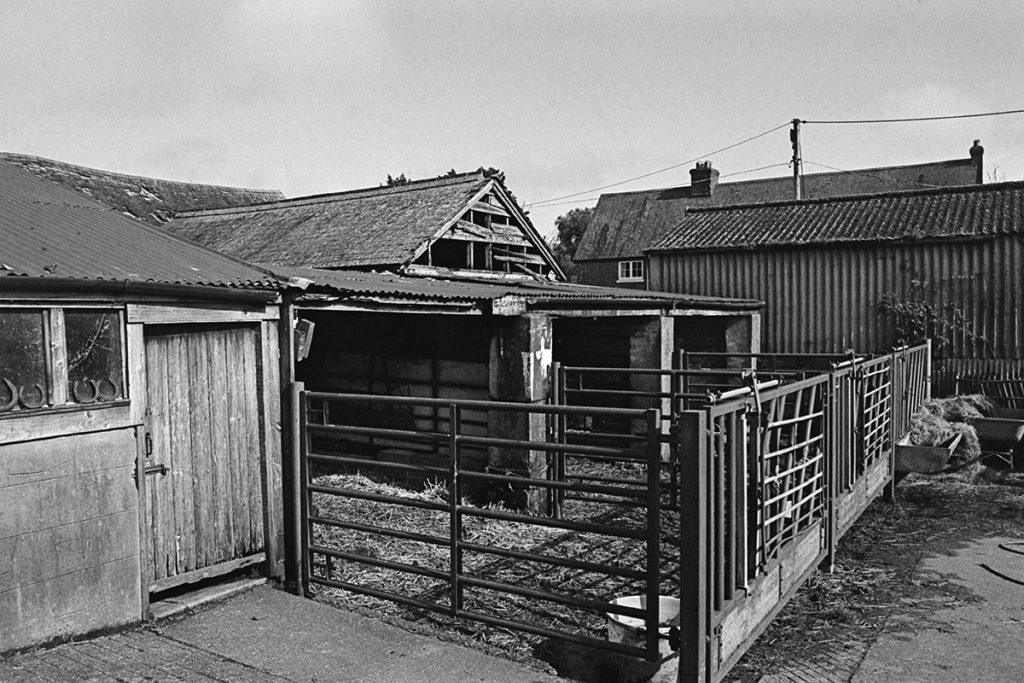
But this film certainly does seem to have a unique look with the highlights appearing slightly bloomy, nice tonality and a deep contrast. But as we all know the look of any film is controlled in development. I’m thinking how this film would looked pulled! Something I may try another time. Or even in 510 Pyro! I’m not sure I will venture with Rodinal with this film again though. I felt that was a bit harsh.
But with so many films on the market I am wondering if this new P33 film would be great for my street photography or even portraits. There’s no harm in trying out and experimenting with different films to see if they could work with your regular work be it portraits, street or scapes and give a different feel.
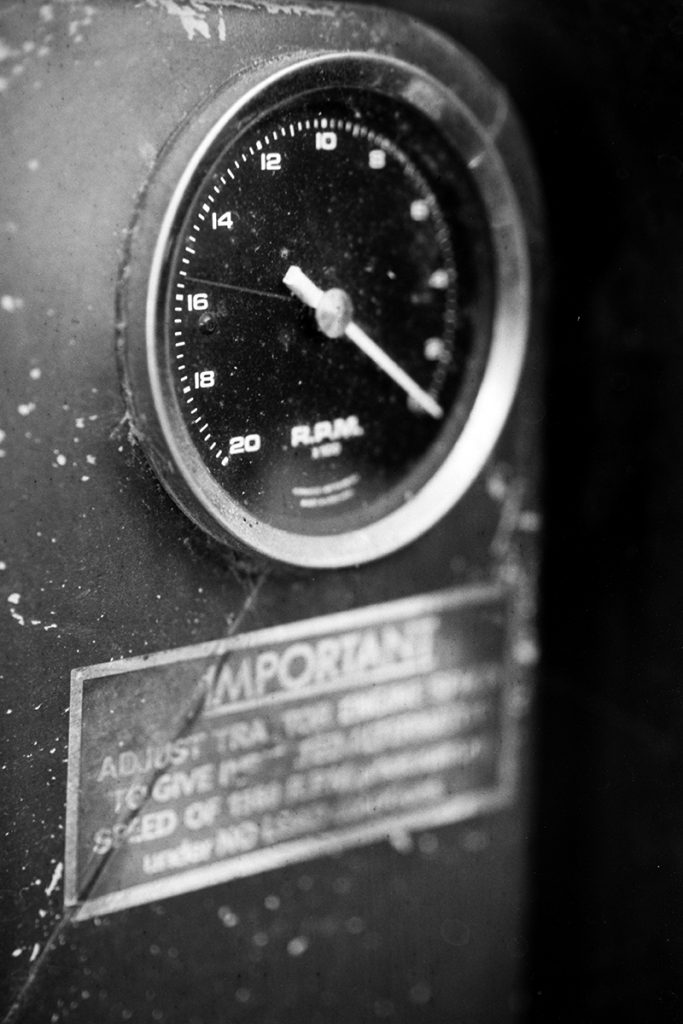
Whether I use the film again and experiment you have to admire the dedication and, no doubt, tremendous effort Ferrania have put into this, actually very nice, film and their other films, and keeping film alive for the community to enjoy.
Why the Olympus OM-20 is so underrated

A camera I hardly see being mentioned is the fantastic Olympus OM-20.
Recent YouTube Video on this camera:
It has all you need to take great photographs on film, especially for beginners, and it does so with elegance and charm weighing in at just 430g. But why do you see so little of this camera with its older brother, the OM-10, taking most of the limelight?
Olympus stunned the photographic community back in 1972 when it unveiled its new OM System of camera, the OM-1. It was then, apparently, the world’s smallest 35mm SLR. It was originally called the ‘M-1‘ but the Germans got the hump as they already had the Leica M1. So a year later in 1973, no doubt after a costly and lengthy court battle, Olympus had no option than to put the letter ‘O‘ in front of it, and the OM series was born! And it went on through the years.
- OM-1 1972/3-1979
- OM-1 MD 1974-1979
- OM-1N 1979 – 1987
- OM-2 1975 – 1979
- OM-2N 1970 – 1984
The OM System went from strength to strength with many OM’s being manufactured from the 1970s all the way into the 2000’s finishing with the OM-2000 but the flagship of all was no doubt the OM-1. A classic still to this day that can fetch a pretty penny on the used market.
But let’s jump back to 1979 when Olympus released the mighty OM-10, a camera that is still sort after today with a decent price tag for such a brilliant camera. And before you wonder, there was no 5, 6, 7, 8 etc. Olympus finished the OM-2 in 1979, and in that year started the OM-1N, the OM-2N and a new concept, the OM-10.
The OM-10
Olympus designed the OM-10 with a specific type of photographer in mind:
- People who wanted to step up from simple point-and-shoot cameras but were intimidated by the complexity of traditional SLRs such as the OM2.
- Photography students looking for an affordable, high-quality camera to learn the fundamentals on.
- Hobbyists wanting a more serious tool for creative expression but who didn’t necessarily need top-of-the-line professional features.
The OM-10 was easy to carry and less intimidating to use. Its simplified controls and focused on the essentials.
It retained the excellent build quality and the renowned Zuiko lenses of the OM system, making it a fantastic value proposition as well as offering automatic exposure allowing users to choose the desired aperture (Aperture Priority), while the camera automatically selected the correct shutter speed for a well-exposed image. Although targeted at beginners, the OM-10 could be expanded with a shutter dial accessory for full manual control.
The Olympus OM-10 was a massive commercial success, selling millions of units and earning a reputation as an accessible gateway to serious photography. It helped usher in an era of more user-friendly SLR cameras that appealed to broader audiences. Many people who started their photographic journey with an OM-10 fondly remember its role in developing their skills and passion.
Arrival of the OM-20
As the OM-10 was still selling to the masses of professional and enthusiastic photographers they must have thought it was time to include a dedicated shutter speed system into the camera and in 1983 the OM-20 was released (OM-G in North America) and I’ve often wondered why they didn’t call it the OM-10s or some other fancy end letter. But they decided to call it the OM-20 but it ran for only a short time. By now the OM-4, which was also released in 1983 continued to run with different variants right up until the late 2000’s. But the OM-20 stopped in 1987. The classic OM camera had pretty much finished and Olympus were trying to keep ahead of the game with the modern designs. Yuk! Just google some images of the Olympus OM-707AF or 707 and you’ll see what I mean.
Maybe Olympus knew they were never going to be able to compete with the likes of Nikon and Canon for high end cameras and put their energies into the compact camera market as they made loads of them and if I remember back in the 90’s those Olympus compact cameras were very popular and very good quality. Just look at how successful the Olympus Trip was! Even David Bailey endorsed it! (I bet he never used one though).
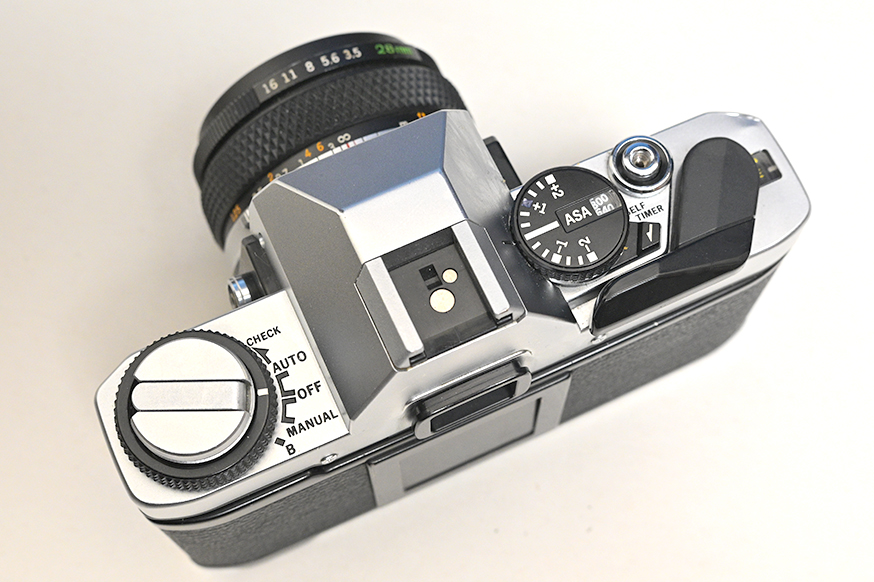
For any film shooter today this camera has it all, or at least all you need to take pictures on film without a heavy price tag and complicated menu system, (thinking of Nikon F5 and 6), and a camera that looks every bit as nostalgic and classy as the usual suspects from the 70’s and 80’s. Plus, it takes those wonderful OM System Zuiko lenses AND it’s small and light weight!.
It’s also a conversation builder too! I’ve had many folk stop me in the street when they see Olympus, then proceed to ask me if film is still made! I love these conversations with strangers.
It has the same metering system as the OM-10 which was called OTF Metering (Off The Film) which was supposed to be very accurate where by, in auto mode (Aperture Priority), would take the light reading as soon as the shutter opened from the film surface and change the shutter speed accordingly. I suppose if you think with normal TTL metering the light could change at the instant the mirror lifted. With OTF the camera measured the light at the instant it hit the film surface. The light cell is located just under the mirror pointing toward the film plane.

But what Olympus did was to eliminate the use of the shutter dial accessory and included a new shutter speed dial on the lens mount bringing the camera more up to date and inline with other AP/Manual cameras of it’s time.

The cameras were identical apart from a few improvements.
Both the OM-10 and OM-20 have the same ASA range, 25-1600 and the same shutter speed range, 1s – 1/1000th.
The OM-20 included an overexposure warning in the viewfinder and a hot shoe dedicated contact point for standard electronic flash sync (X-sync), making it easier to use modern flashes without additional adapters.
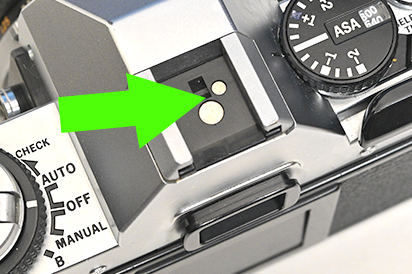
The OM-20 also provided more control and a few quality-of-life improvements for photographers wanting to delve into manual exposure settings. The OM-10 catered more to those who valued pure simplicity in an aperture-priority system.
Why underrated?
So why does the OM-20 have less popularity than the OM-10?
I can imagine back in 1979 for anyone wanting to get into the OM System the less expensive choice would have been the OM-10. The OM-20 would have been slightly more expensive because of the modifications and I would imagine the sales of the OM-10 would have declined, apart from those that would just wanted simplicity then aperture priority was King and would have gone for the cheaper OM-10.
But today it would make more sense to grab the OM-20. I had the use of an OM-10 some years ago and I made a video on the camera. I instantly loved it but after some research I decided to buy the OM-20 and I’ve had it ever since. Unfortunately the timer never worked! And I have noticed the metering is off by about a stop, which is no problem as for Auto Mode I just adjust the exposure compensation dial.
If you look around you will notice the OM-20 is slightly cheaper on the used market and it’s not always guaranteed you will get an OM-10 with the shutter speed adapter, in which case you can expect to pay extra. (maybe £20-30).
Maybe the OM-20 is not as popular because of all the nostalgic blogs and vlogs dedicated to the legend that was the OM-10. And it’s also evident that the price seems to hold better than the OM-20 but in my opinion the OM-20 is a no brainer of you’re looking to use the camera and get the most out of it for your film photography journey.
And finally beware both cameras are electronic shutters and will only work with a battery inside! I remember finding this out the hard way literally half way through a vlog for YouTube I had to go to the shops to get batteries (2xLR44) to unlock the shutter after an exposure! The shop didn’t sell them separately and I had to buy a pack of assorted button cell batteries!
ADOX CMS 20 II Pro

I’ve always loved photographing natural subjects indoors. The way soft window light plays with textures and casts subtle shadows is simply magical. Recently, I wanted to push the boundaries of detail and tonal range in my indoor photography. That’s why I was so excited to try out ADOX CMS 20 II Pro film. This stuff is legendary for its sharpness, fine grain, and incredible resolution.

These low ISO Films were used back in the day mostly for archival work such as taking photographs of documents and artworks and such where detail was paramount. Maybe also for insurance companies photographing fine art detail.
ADOX Claim this stuff to equal 500 megapixels! You can read what they say on their website
And although this is 35mm film don’t get too excited if you think it’s also available in 120. It was, but not anymore! Apparently ADOX’s 120 machine broke down and it’s doubtful (hopeful) they will make it in 120 format again. BUT… They do make it in 4×5 if you are looking for silly resolutions.
You may want to check out the video I made on the channel.
The Setup
- Camera: My trusty Nikon FM3A, a fully mechanical workhorse.
- Lens: The sharp Nikkor 55mm F2.8 macro lens for close-up detail.
- Subject: A small collection of seashells with diverse textures and shapes.
Why ADOX CMS 20 II Pro?
My friend Neil Legg sent me a couple of 35mm rolls to dabble with along with some Spur R800 Film and also 50ml of SPUR developer.
I was already familiar with the technical advantages of CMS 20 II Pro and had used it in the past but never in a dedicated developer.
- Unmatched sharpness: The hype is real! This film is capable of resolving incredible levels of detail.
- Invisible grain: Even with big enlargements, your images stay smooth and clear.
- Wide tonal range: Smooth transitions between light and shadow, preserving nuance in subtle textures.
It was perfect for my indoor shell project! Natural light isn’t always the brightest, but I knew CMS 20 II would still capture every little detail the shells had to offer.

The Shoot

I placed the shells on white paper (It’s actually paper you get from take away food places, fish and chip shops which is off white) on a window sill, and diffused the light coming in using a sheet of parchment paper letting the soft, diffused light illuminate them. Capturing fine detail was my goal, but I couldn’t stop the lens down as much as I wanted because I was spreading hitting 1 second shutter speed and I wasn’t sure of the reciprocity failure times on this film so I stayed around f4 / f5.6, which was fine.
With the FM3A’s accurate metering, finding the correct exposure was a breeze but because the paper was about a stop brighter than the shell I decided to expose a stop over the metered exposure which worked well. I also used my Sekonic handheld meter to measure the light in between shell changes because the light outside was in and out of cloud.
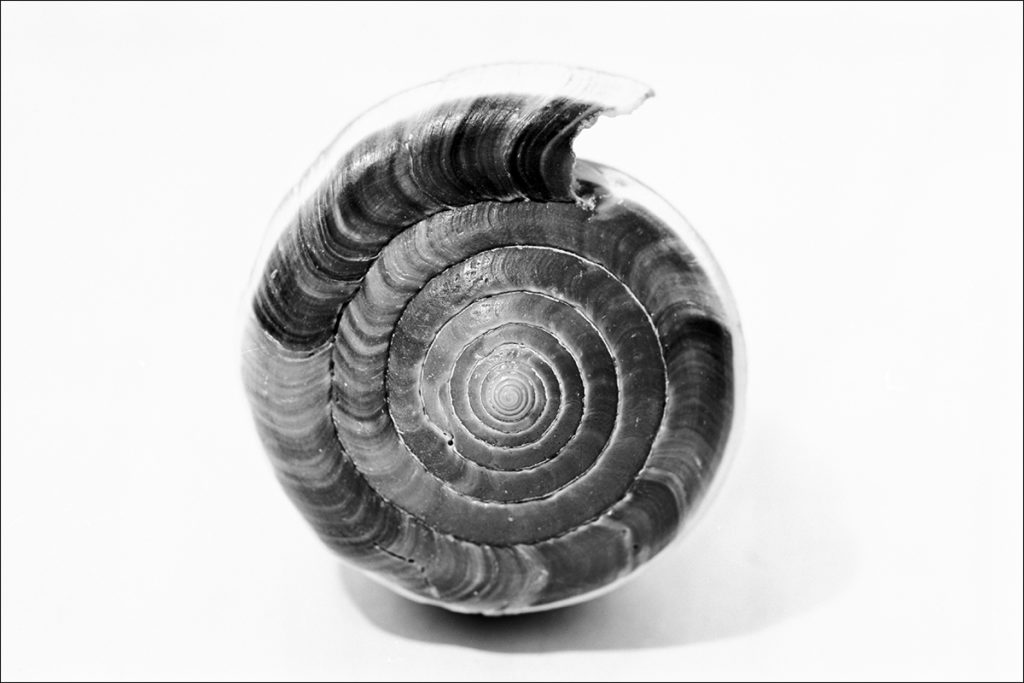

Below is a prime example of why I wanted to get more depth of field.

This film is known for its banging contrast in bright conditions where highlights and shadows are found. I used a Colbor CL220R continuous light against a grey background for the next few photographs just to see how they would look.



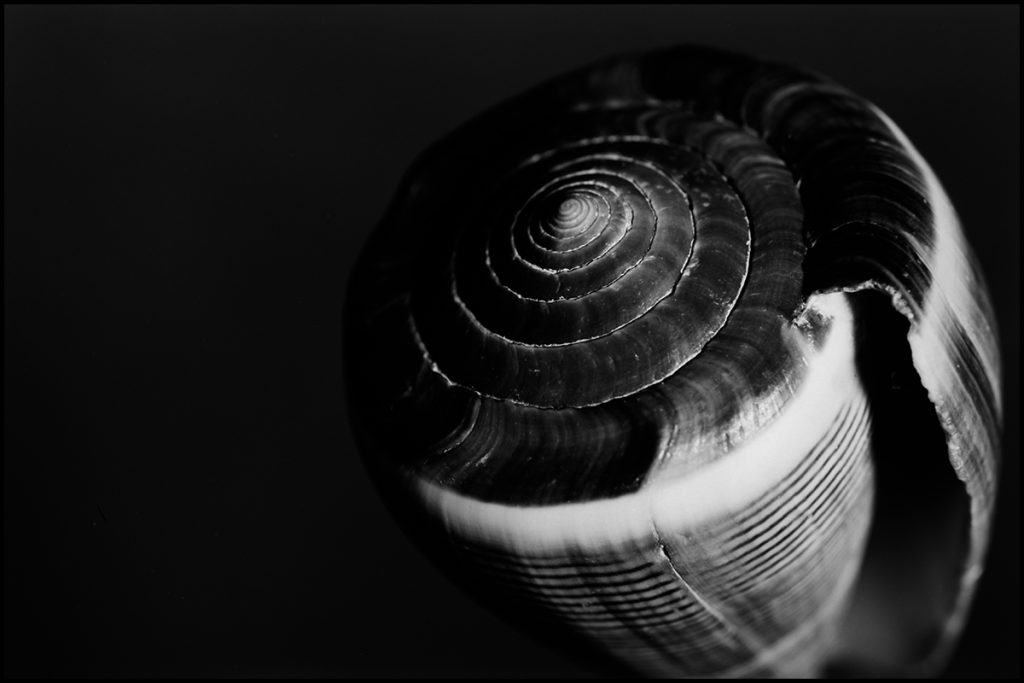
The Development
This is where things get important. CMS 20 II Pro needs specialized development to unlock its full potential. I didn’t use the dedicated ADOX ADOTECH IV developer as recommended by the manufacturer. I went with what Neil Legg sent me, SPUR Nonotech UR. Pretty much the same stuff.
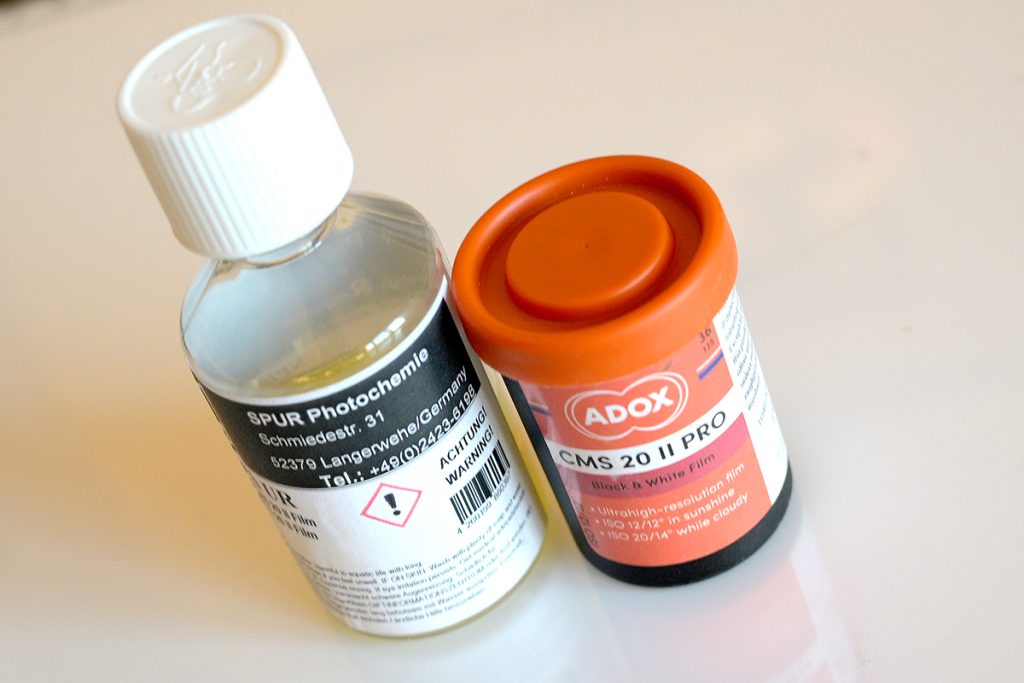
Because these films are such low ISO and the times we get to develop for 20 ISO means we are pretty much pushing the film and these developers are formulated for that purpose so we can achieve better tonality from the film being pushed than say using D76, ID11, Rodinal etc. Try to develop in these developers and the curve is diagonal! Contrasty!
And with only 50ml in the bottle and diluting 1 part to 24 I’m only going to get 4 rolls developed from that bottle so it’s not a cheap way to shoot by any means BUT, for doing this sort of work once in a while and getting 144 photographs it’s not bad at all.
So using the SPUR chart below you can see I developed for 8.5 minutes.
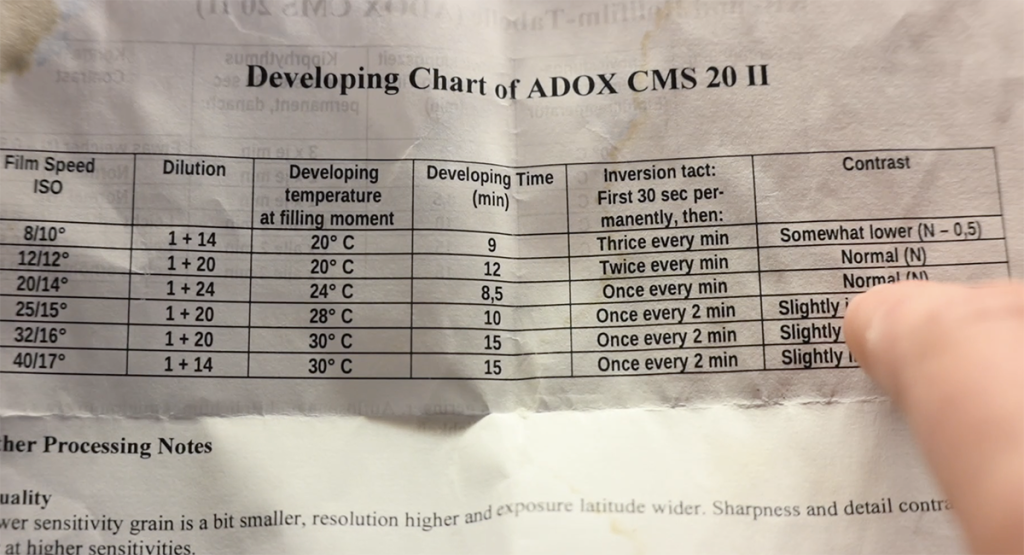
The Results

Blown away is an understatement! I scanned the negatives myself using a Nikon ZF and the same 55mm Micro Lens with a 2x Teleconverter, and here’s what I loved:
- Mind-blowing detail: I could zoom into the scans and see textures even my naked eye couldn’t discern while shooting. The ridges of the shells, the subtle color variations – everything was there.
- Smooth tones: Highlights and shadows transitioned seamlessly. I loved the gentle way the light rolled off the shells’ curves.
- The “feel” of film: Even with all the resolution, there’s that certain organic quality to the images that I love.
I also took the negatives in the darkroom, which you can see in the video, and made a 10×8 Print which also looked fantastically detailed.
Don’t forget, for this shoot I was using a very good lens also!
Tips for Shooting ADOX CMS 20 II Pro
- Steady wins the race: Use a tripod! That detail won’t mean anything if your shots are blurry.
- Learn to expose properly: This film can be a bit unforgiving with exposure. A good light meter is essential.
- Develop with care: Don’t waste this film’s potential! Use ADOTECH IV , SPUR NANOTECH or something similar that is specialised for these films.
Finally a photograph I took of my folding cameras using the Colbor light.
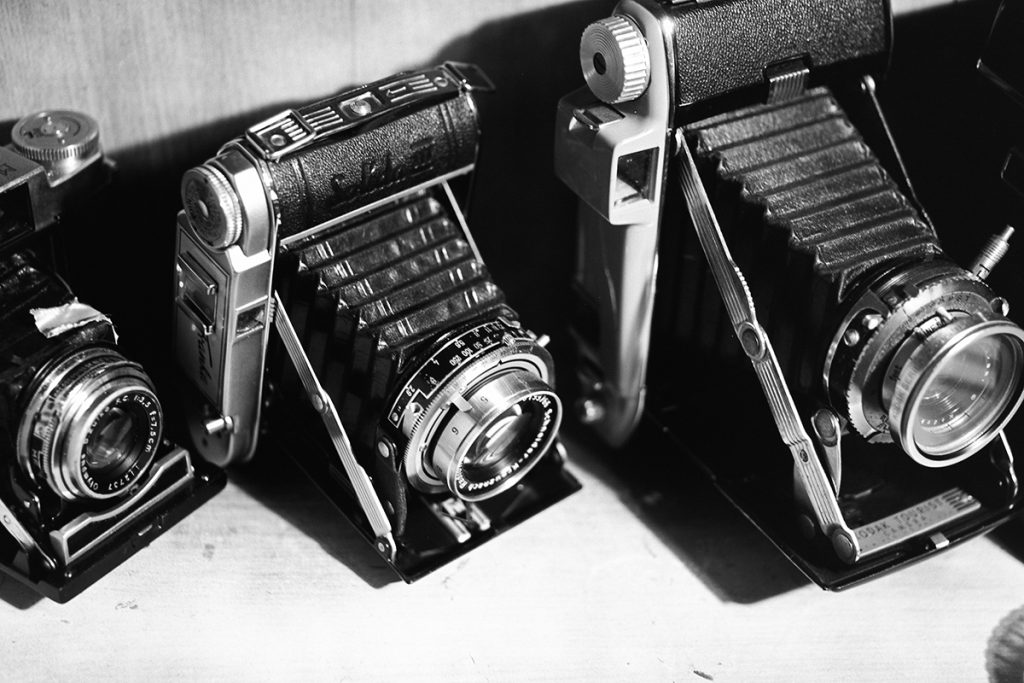
Canon AE-1 Program – A Timeless Classic!

The Canon AE-1 Program: A Timeless Classic
The Canon AE-1 Program, released in 1981, revolutionized the world of 35mm film photography. Combining innovative features, ease of use, and remarkable affordability, this camera made high-quality photography accessible to a wider audience than ever before and became a runaway success, selling millions of units globally. Its enduring appeal lies in its unique blend of simplicity and functionality
I’m lucky to have this one in my hands to play with. It’s not mine. I am looking over it and making sure it works before it is sold on. It was donated to a local charity, yet to be sold! Probably on ebay.
And so far so good! No leaks or shutter problems or mirror lock ups! However, the light meter appears to be slightly out. See my tests on my YouTube Channel

Canon designed it specifically with two groups in mind:
- Photography Enthusiasts: Beginners and hobbyists sought a high-quality camera that wouldn’t overwhelm them with complicated controls. The ease-of-use, Program mode, and clear feedback in the viewfinder made the AE-1 Program the ideal guide for people wanting to improve their photography skills.
- Experienced Shooters: Seasoned photographers also appreciated the AE-1 Program. Its shutter priority mode allowed full creative control over shutter speeds for specific effects. Moreover, it served as a lightweight and affordable backup body for those with more complex pro-level gear.
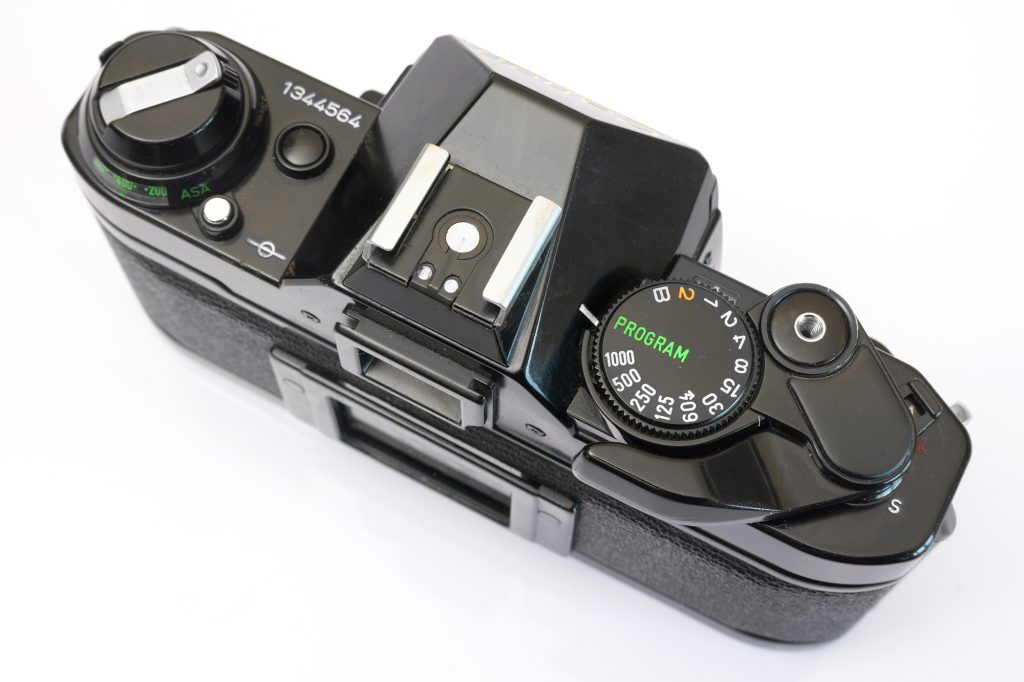
Using the Camera
Despite it being complex for the time it is very easy to use in most enthusiasts hands. Unless the battery runs out! Yup. It needs a battery to function. No battery and the camera won’t even fire.

But with a fully loaded (4LR44) Battery, available online, the camera comes to life and offers anyone using the camera a no nonsense photography experience.
The camera is comfortable to shoot, like many other cameras of similar design, and for extra comfort the camera allows the Canon Power Winder A to be fitted for a better grip and the added bonus of automatically advancing the camera.

The speeds range from 2 Seconds all the way to 1/1000th and has Bulb Mode too for long exposure photography and has an electromagnet controlled cloth curtain shutter that limits top shutter speed to 1/1000 and a slow flash sync speed of 1/60 second. I’m not sure how this curtain holds up to those horrid sunlight burnt pinholes you see in other cloth shutters but with care should last a lifetime!

Shooting Modes (Program)
Fully Manual
You can use the camera in fully manual mode if you’re feeling confident meaning you control the Shutter Speed and the Aperture for your exposure.
Inside the viewfinder a little “M” is visible warning you that you are in DIY mode.

Also inside the viewfinder the camera will tell you the best aperture to use for the speed selected in that scene. So for example if you choose 1/125th shutter speed and you choose F11 on the aperture ring and inside the viewfinder it says F5.6 that means the camera is telling you the correct exposure. You can either adjust the aperture or shoot as you were. The camera won’t override your judgment in fully auto mode.
Program Mode
Or you can switch it into “Program” mode and choose the “A” Setting on the lens, (or indicator on other FD lenses), and the camera turns into a highly effective automatic exposure camera where it will select the best shutter speed and aperture for the scene you want to shoot.
A little “P” is seen in the viewfinder to show you are in Program Mode.

Shutter Priority
Or you can take it off program mode and select whichever Shutter Speed you want and the camera will decide the best Aperture for you. For this to work you need to set the aperture ring on the lens to “A” or which other indicator is on your lens.
There is NO Aperture Priority on this camera. Meaning that whatever you do in any of the Auto Functions the camera will always select the aperture for you.
What does the shutter speed do?

On the shutter speed dial there are numbers. They are to select the speed of the cameras shutter curtain opening and closing in fractions of a second. If you choose 1 Second (1). Then when you take a picture the cameras shutter curtain will remain open for 1 full second. Thats quite a long time in photography.
Imagine you are taking a photograph of a person walking their Dog. If the camera exposed them for a whole second all you would see would be a blurry mess. Because for that whole second the film was being exposed and anything moving in the scene, including your camera shake, and would imprint on the film as blurry or streaky.
That speed is perfect if you are using a tripod and want cars in motion. Your scene would be perfectly still and the cars would have this streaking effect.
If you choose 1000, which means 1 thousandth of a second, the cameras shutter curtain would open and close faster than your eye can blink. Very fast! Meaning whatever you take a photograph of it will literally be frozen in action.
Most of the time 1/250th is perfect for freezing people walking if you were doing street photography for example. Or a portrait 1/125th would be adequate where your subject isn’t moving.
The photograph below was taken at 1/125th of a second. You can see the person holding the child is slightly blurry. They moved toward the fencing pretty quick. Quicker than the people walking in the background. If that was taken at 1/250th they would have more likely have been sharp.
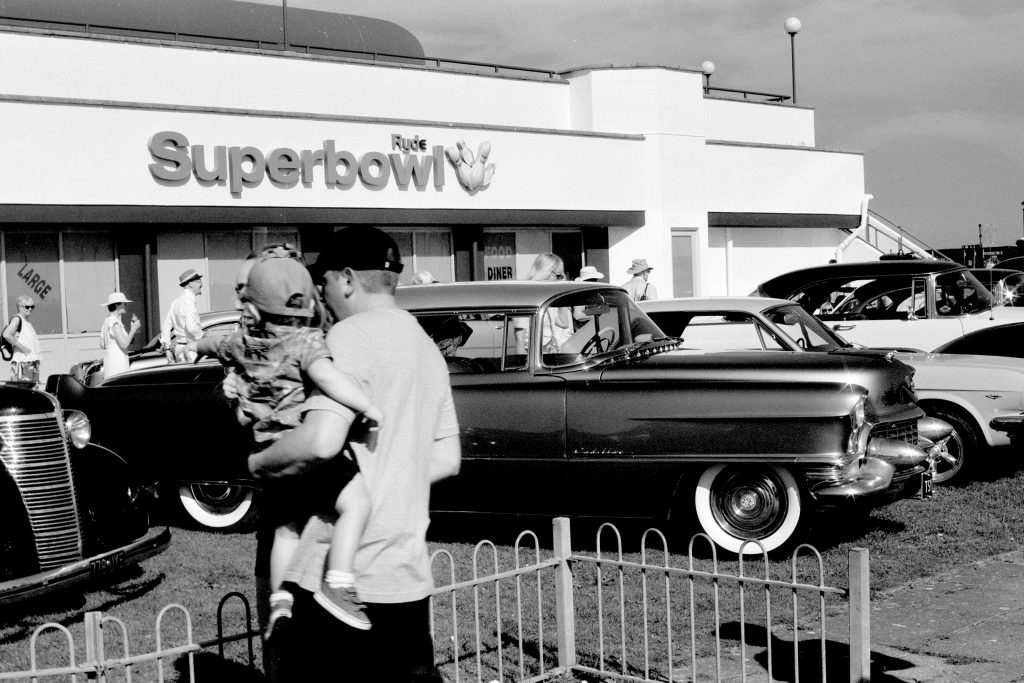
Once you start to drop below 1/125th to say 1/60, 1/30 and especially 1/15th if you have not got a steady hand then you’ll need a tripod to avoid blurry photographs from your hand shake.
And that is what this camera is all about. Shutter Speed Priority. You can be as creative as you like with the shutter speed and the camera will always correct the exposure by controlling the aperture for you. If the scene is too dark or too bright the camera will still let you take a shot but will give you warnings inside the viewfinder.

Exposure Warnings
If you are using the camera in Fully Manual or Shutter Priority mode the camera has warnings inside the viewfinder for overexposure and underexposure.
In Fully Manual mode and Shutter Priority mode, if your scene is too dark for the settings dialled in to the camera the largest aperture will flash inside the viewfinder. F2.8. f1.8, f1.4, f1 depending on your lens.
If your scene is too bright the smallest aperture will flash, F32.
Also it’s worth knowing that if you are in fully auto mode (Program) and the scene is not so bright and the camera needs to select a shutter speed less than 1/30th of a second a little “p” will flash inside the viewfinder to warn you there is a possible chance of camera shake.
Other than that, in program mode, you don’t have a clue what shutter speed the camera is set to. It only tells you the aperture. Which I think is a shame.
And with all this the ISO/ASA film selector ranges from 12-3200.
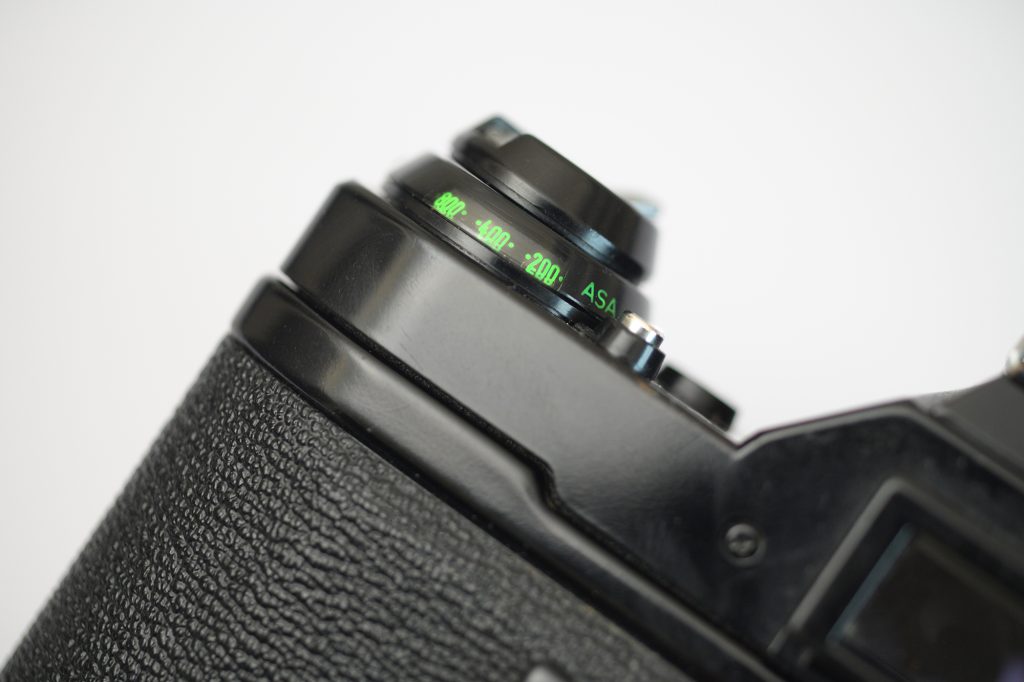
Viewfinder
The AE-1 Program supports interchangeable focusing screens and there are eight different screens available including the standard screen which is on this camera with a Split Microprism rangefinder. Unlike the Canon A1 which also has interchangeable focus screens and had to be replaced by a specialist the AE-1 Program can easily be changed by the user.

Depth of Field Preview
The DOF preview button, which you can see next to the lens mount is a push and lock system meaning you can lock it in place and take your finger off.
And whilst we can see the front of the camera it’s worth mentioning it takes Canon FD Mount Lenses for which there are plenty out there to find. Unfortunately this camera came with no original Canon lenses.
Top Features

Next to the advance lever you will see three function. A, L and S.
A is pretty much unlock. L is Lock and S is the Self Timer. And the self timer is about 20 seconds. And the button shown below is for cancelling the self timer after it’s been started.

Overall Thoughts
This camera is a timeless classic and a well made camera and gives you a nice shooting experience without the hassle of trying to guess the metering or camera settings. Just point, focus and shoot!
Whilst the earlier model, the A1 offered Aperture Priority and Shutter Priority with digital style viewfinder I am finding it hard to understand why Canon took Aperture Priority away on this camera.
Despite its age and lack of Aperture Priority, the Canon AE-1 Program remains a highly sought-after camera, attracting both film photography veterans and a new generation of analog enthusiasts. The resurgence of interest in shooting film adds a dimension of authenticity and nostalgia that can’t be replicated digitally. If you come across a well-maintained AE-1 Program, don’t hesitate – snap it up and see why this camera left an enduring mark in photographic history!
Through its success, the AE-1 Program earned its place as one of the most iconic film cameras of all time. Its blend of features, aesthetic, and user-friendliness resonated across generations of photographers.
Which film format works best?

Film photography thrives on variety, and at the heart of that variety lies format. From the small 35mm to the expansive world of large format, each choice dictates the final look and feel of your image.
Starting out: 35mm
If you want to get into film photography and are looking for a camera that will suit your needs it’s important to recognise exactly what you want to use the camera for. What subject and the final delivery. Prints or just scans for instagram posts. The bigger the negative the more expensive your hobby will become. Yet better quality prints.
Below, 35mm, 6×9 and 4×5

If you enjoy the challenge of street and urban photography and only want to scan your negatives and share with the world on social media then a 35mm film camera would be perfect. SLR or Point and shoot.
If you are not looking for big blow up prints then you don’t need the quality larger formats have to offer. You will get 36 exposures per roll of 35mm film where you can shoot and practice to your hearts content. Even if you intend to print your work 35mm negatives look great 10×8 and even slightly bigger. Start getting into 20 inch prints and beyond and you may start seeing the truth of the film grain.
But let’s face it, a 10×8 or 16×12 inch print of a street or family moment is probably the biggest you will go to if you were to exhibit your work. And with street photography sometimes prints look great with some grain, contrast and grit anyway.
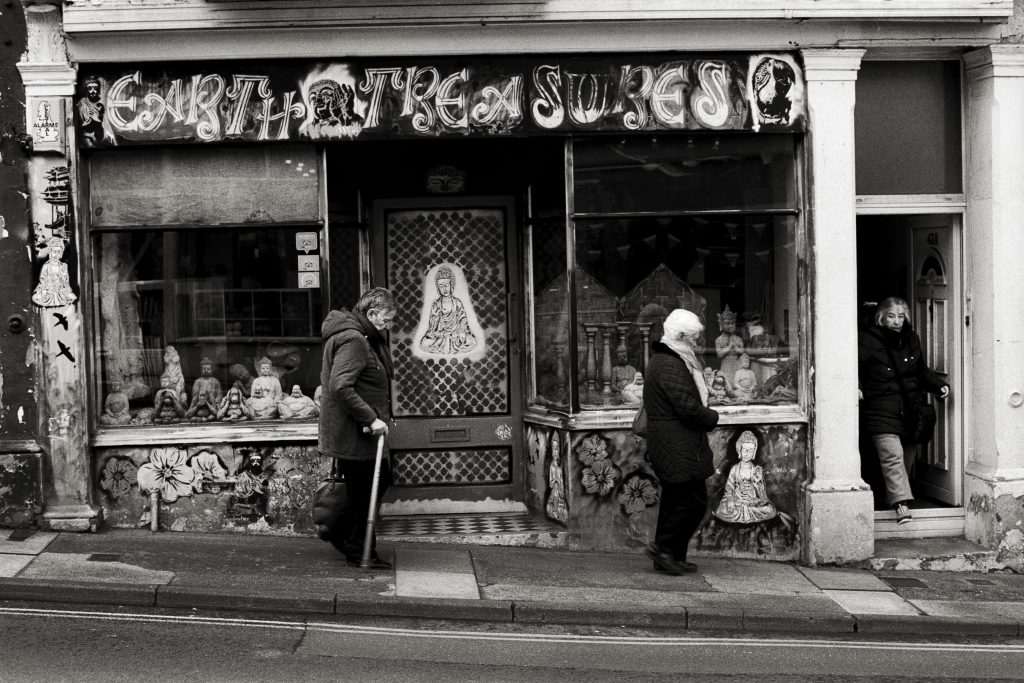
If you want to shoot mostly portraiture and scapes then maybe a medium format camera would suit you best. With a nice 645 medium format camera you will get 15 shots. Bigger negatives packed with more silver for a better quality photograph and cleaner print enlargements. The film cost for 120 and 35mm are pretty much the same. Would you shoot more than 15 shots for a portrait session on film? Maybe two at a push. Same with landscapes. If you have a scape plan in mind 15 shots on medium format is ample to decide on a favourite negative to print.
Portrait taken on the Yashica Mat124G medium format TLR camera.
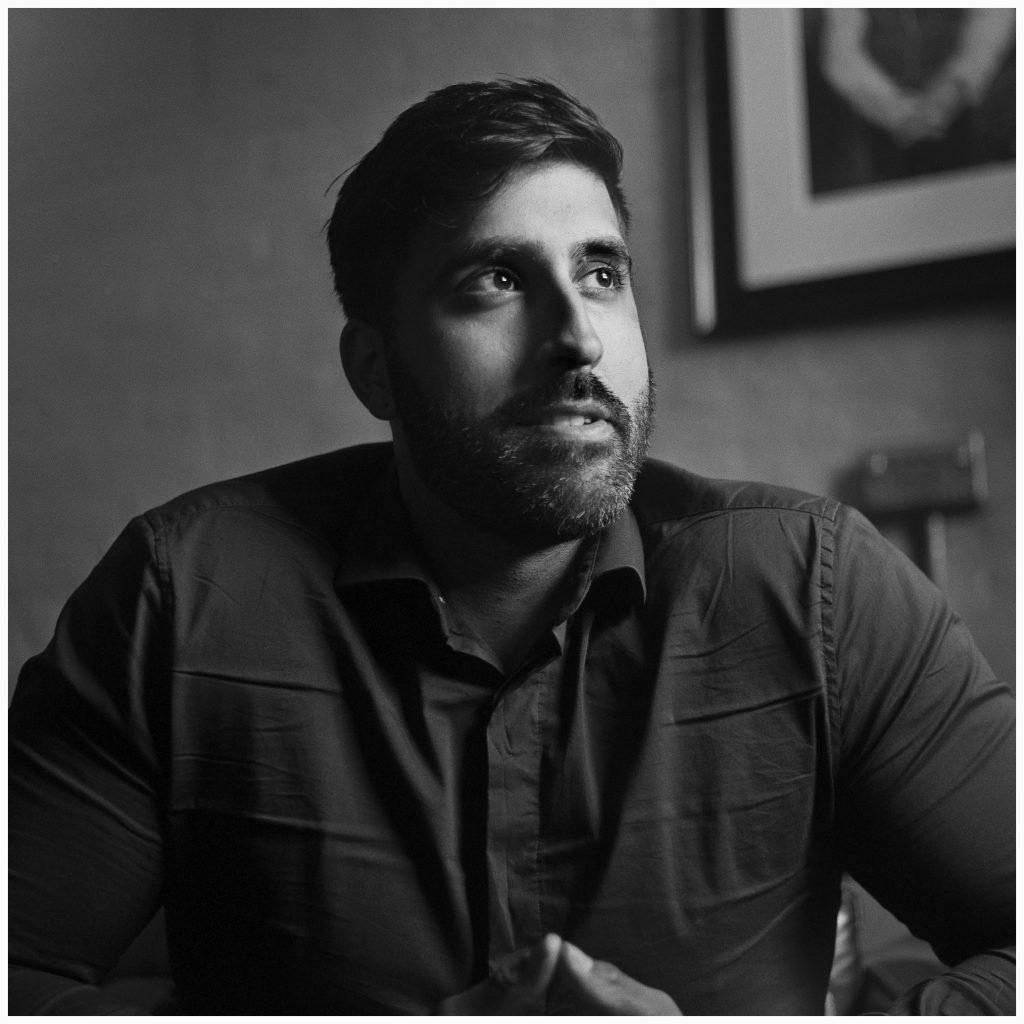
Medium format will offer far more detail than 35mm especially if you intend to print. Especially 6×9.
Scape taken on the Mamiya RZ67 medium format camera. (645 Negative)
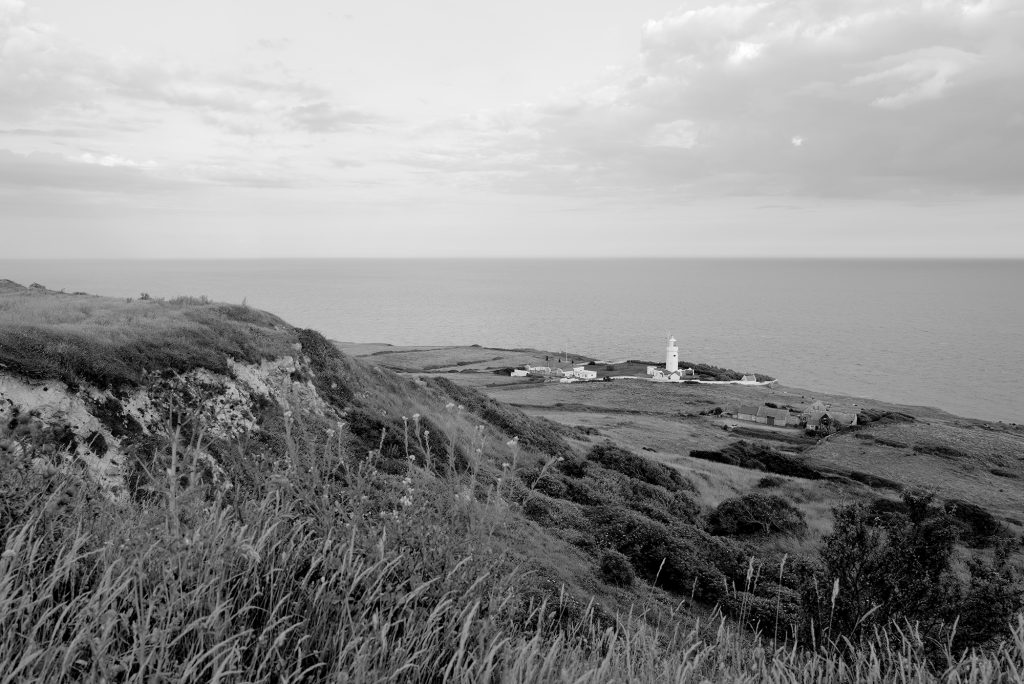
So it’s important to understand what it is you want to use the camera for mostly. If it’s for general all round photography and fun then I would say 35mm is the way forward. Plus. There are a ton of inexpensive 35mm cameras out there.
The three most popular formats are 35mm, medium format, and large format. Let’s explore their distinctive qualities and the impact they have on image quality.
35mm
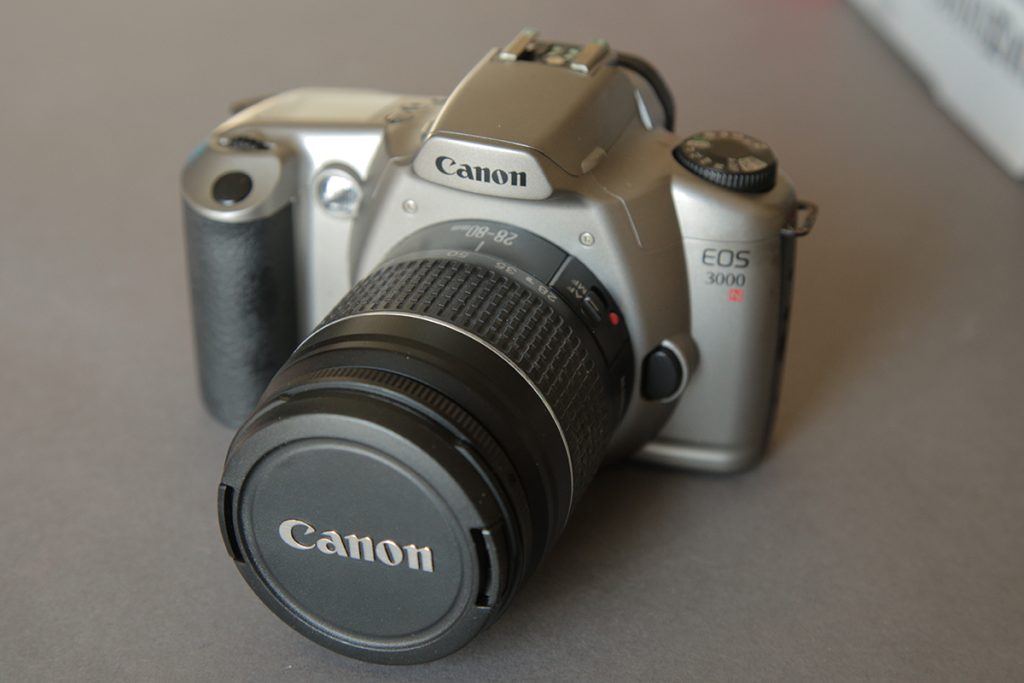
The classic, versatile 35mm format reigns supreme for its convenience and portability. Nestled in compact cameras, it’s your companion for everyday shooting. But don’t underestimate its potential!
- Image Quality: Smaller frame size means smaller negatives, resulting in more visible grain when making print enlargements, especially in low-light situations. However, modern films and skilled development can push the boundaries, yielding impressive results.
- Strengths: Compactness, affordability, vast camera and film selection, perfect for street photography, travel, and everyday moments. Plenty of inexpensive 35mm cameras on the used market as well as lenses.
With 36 exposures (or 24) you get plenty of shots for your money and far more negatives to look for keepers from a single shoot.
Medium Format
For those seeking exquisite detail and smoother tones, medium format beckons. Imagine negatives several times larger than 35mm.
The common sizes are 645, 6×6, 6×7 and 6×9.
645 = 15 shots
6×6 = 12 shots
6×7 = 10 shots
6×9 = 8 shots (insane quality!)
And for medium format you don’t need to pay through the nose for a camera. There are plenty of inexpensive medium format folding cameras out there for sale from the 1950s, 60s and 70s that have wonderful lenses for awesome quality negatives. I have a few and they each deliver impressive quality in their own quirky way. If you want something more modern such as the Hasselblads and Mamiyas you can expect to pay a hefty price. And if looked after and CLA’d (Clean, Lubricate and Adjust) will last a lifetime.
AGFA Record II 6×9 Medium Format Camera

- Image Quality: The larger negative translates to significantly less grain, capturing intricate details and offering wider dynamic range. Prints can be enlarged further without sacrificing quality.
- Strengths: Superb image quality, ideal for landscapes, portraits, and fine art photography. Offers a slower, more deliberate shooting experience.
When you have only 8 shots in your camera you do find yourself slowing down and taking the time to expose, frame and wait for the right moment. You want each negative to be a keeper. Also most of the older cameras don’t have a metering system which leads you to making your own decisions exposing for a scene. You don’t have the option to bracket your shots as much with only 8 shots in the camera and It certainly isn’t a lazy way of taking photographs and get it right across the entire roll of film leads to a self satisfaction to be proud of.
Large Format
The ultimate in image fidelity, large format involves individual sheet films, each meticulously loaded into the camera. Prepare for a shift in pace and mindset!
I use an Intrepid Large Format 4×5 camera and the quality of the negatives are mind blowing and I use it mostly for portraits and landscapes and usually shoot just four sheets of film at any one time.
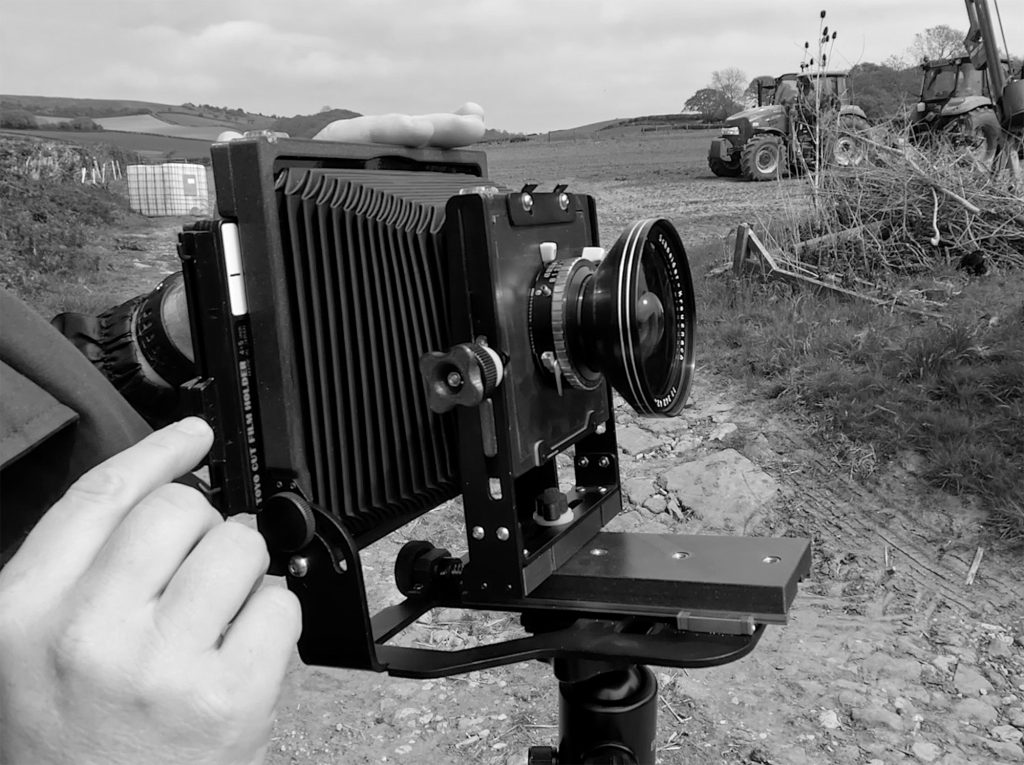
- Image Quality: Unmatched sharpness, minimal grain, and incredible tonal range. Large format excels in capturing vast landscapes and architectural details with breathtaking clarity.
- Strengths: Unparalleled image quality, ideal for professional work, fine art photography, and achieving museum-worthy prints. Demands meticulous technique and a much slower workflow.
So, Which Format is Right for You?
The choice boils down to your creative vision and priorities.
- 35mm: Ideal for portability, affordability, and capturing life on the go.
- Medium Format: Excellent balance between size, quality, and creative control.
- Large Format: For those seeking the absolute best image quality and a unique, deliberate shooting experience.
Remember, the format is just one aspect of the equation. Your camera, lens, film choice, and personal style all contribute to the final image. Experiment, explore, and discover the format that resonates with your creative voice!
Bonus Tip: Don’t be afraid to mix and match! Each format has its strengths, and you can leverage them to create a diverse portfolio showcasing various aesthetics.
I hope this blog has shed some light on the exciting world of film formats. Remember, the journey is just as important as the destination. So, grab your camera, choose your format, and start capturing the world in its unique beauty!
Fuji GW690 III 6×9 Medium Format Camera
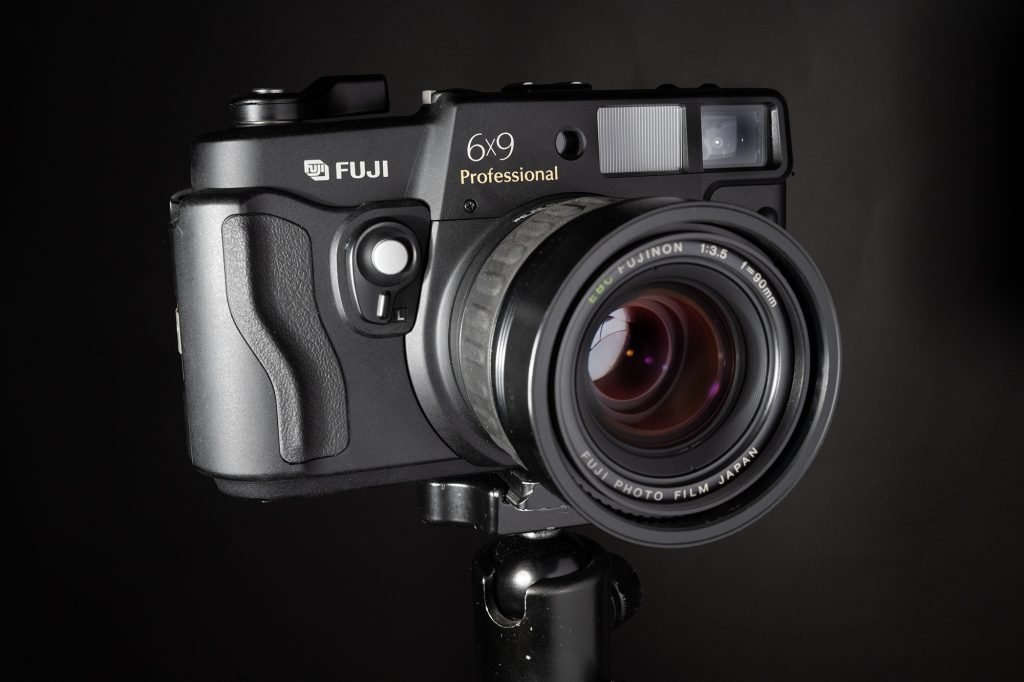
The Fuji GW690III, affectionately nicknamed the “Fuji Beast,” and also the “Texas Leica” may not be the flashiest camera on the block, but for dedicated film photographers seeking exceptional image quality and a unique shooting experience, it’s a legend.
My first experience: (See the video here)
I was in Bahrain recently and this “New to me” Camera, sourced from the Japan Camera Hunter, was hanging off my neck as I took to a Farmers Market to take photographs of the daily hustle. It looks heavy but weighs in at around 1500g and wasn’t uncomfortable at all to carry.
Two rolls of Ilford Delta 100 which I pushed to 400 and a roll of Ilford Ortho 80. Why did I push the film? I wanted a contrasty look and also be able to shoot faster shutter speeds and smaller apertures.
I didn’t have long to take my photographs as my Wife and Daughter also wanted some time with me, however, it didn’t take me long to bang out three rolls of 120! With only 8 shots per roll I found myself done in no time eagerly awaiting to see the fruits in development. What a camera!

Above: Nikon Zf just to show the colours of the Market. Below: Ilford Delta 100 (400)

The Power of 6x9cm:
Unlike most 35mm film cameras, the GW690III captures images on much larger 6x9cm negatives. This translates to exceptional image quality with incredible detail, dynamic range, and grain characteristics. However, be prepared for larger film costs and special scanning needs. I scanned these at home using a DSLR. So much detail comes from these negatives. Especially in the darkroom making prints.
Okay, so we only get 8 shots per 120 film. It certainly makes you think more and wait longer for a shot. With this in mind you find yourself slowing down, taking time and opens your creative mind. If I get 8 good shots from a roll of 36 in a 35mm camera I’d be happy!

Rangefinder:
Using the GW690III’s rangefinder is an exercise in mindfulness. You become one with the camera, the rhythm of your fingers adjusting focus, your eye a laser locked on the scene. It’s a deliberate dance, a far cry from the autofocus point-and-shoot we’re accustomed to.
It offers more than just basic focusing. The superimposed frame lines let you compose directly in the viewfinder, aiding in precise framing decisions. Additionally, the parallax correction markings compensate for minor shifts in perspective when focusing close-up, ensuring your subject remains precisely where you envision it.

A Legacy of Excellence:
Released in 1992, the GW690 III wasn’t the first in its line, but it refined the concept. Its predecessors, the GW690 and GW690II, laid the groundwork, but the III brought portability, image quality, and user-friendliness to a new level. Designed by Hiroshi Ohtake, mastermind behind the Leica M6, the GW690III boasted a sleek rangefinder design reminiscent of its Leica cousin, but on steroids.
Below: Behind the scenes of the market. Two little children sitting on their father’s boxes. Ortho 80.

Built for Deliberate Photography:
This camera isn’t for point-and-shooters. It’s a manual beast, demanding you to slow down, think, and compose each shot carefully. With no autofocus, no fancy metering modes, and a viewfinder that takes getting used to, it forces you to become one with the camera and the scene. Its charm lies in this deliberate process, making each capture a conscious decision.

The “Beastly” Heart: The 90mm f/3.5 EBC Fujinon Lens:
One of the camera’s true highlights is the incredible 90mm f/3.5 EBC Fujinon lens. This sharp, contrasty beauty renders scenes with stunning detail and a unique signature bokeh. From landscapes to portraits, its versatility shines, making it a true all-rounder. EBC stand for Electron Beam Coating. Sounds impressive anyway!
Below: The results of pushing Delta 100 2 stops. Contrast crazy! 510 Pyro Developer.

A Quirky Charmer:
The GW690III isn’t without its quirks. Its bulky size and weight might not be for everyone, the viewfinder takes some practice to master, and the lack of automation requires film photography know-how. But for those who embrace its uniqueness, it becomes an extension of their creative vision.

Is the Fuji GW690III Right for You?
If you’re a seasoned film photographer who thrives on slow, deliberate shooting, appreciates exceptional image quality, and enjoys the challenge of a manual camera, the GW690III could be your dream companion. However, if you crave automation, portability, or affordability, it might not be the perfect fit.
The Final Verdict:
The Fuji GW690III isn’t just a camera; it’s an experience. It’s a testament to the beauty of slow photography, rewarding those who invest time and effort with unparalleled image quality and a unique creative journey. So, if you’re ready to embrace the deliberate path, the “Beast” might just be waiting to unleash its magic on your film.
Zeiss Ikon Nettar Woodland
Hey camera connoisseurs and vintage enthusiasts! Today, I dive into the world of a true photographic icon: the Zeiss Ikon Nettar. This little folding beauty isn’t just a relic of the past, it’s a gateway to a simpler, more deliberate approach to photography.
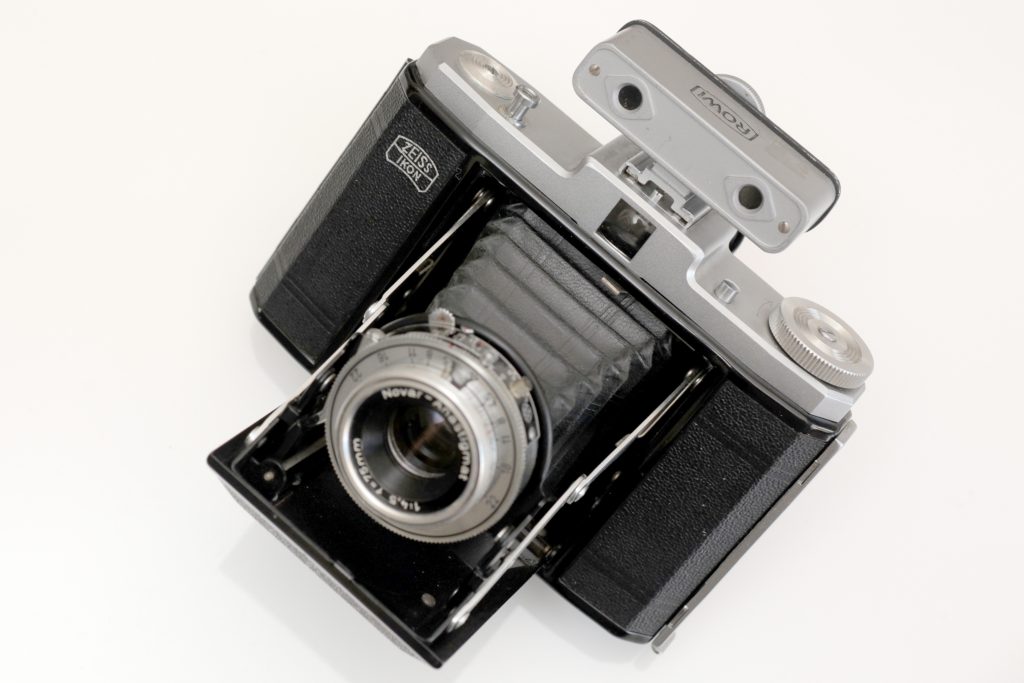
Back in the 1930s, Zeiss Ikon had a vision: make photography accessible. Enter the Nettar, a folding masterpiece engineered for the everyday snapshotter. No fancy rangefinders, no light meters, just clean lines, a satisfying click, and the legendary Novar lens. These cameras weren’t about technical acrobatics, they were about capturing life’s moments with intention and a touch of nostalgia.
I took this beauty into the woods recently with a challenge! I shot a roll of Kodak TMAX 100 and was left with speeds slower than are on the camera itself and after metering the low lit woodland all I could do was to put the camera into Bulb Mode and guesstimate and count my exposure times. Most of which were around 1/15th of a second!
I made a vlog on the experience and here is the video, and also below are the negatives and scanned images as well as a couple of prints I made in the darkroom!
As expected my negatives were over exposed, but not ruined! This film has bags of latitude and I knew I would easily be able to get a print from them in the darkroom. They were developed in 510 Pyro.
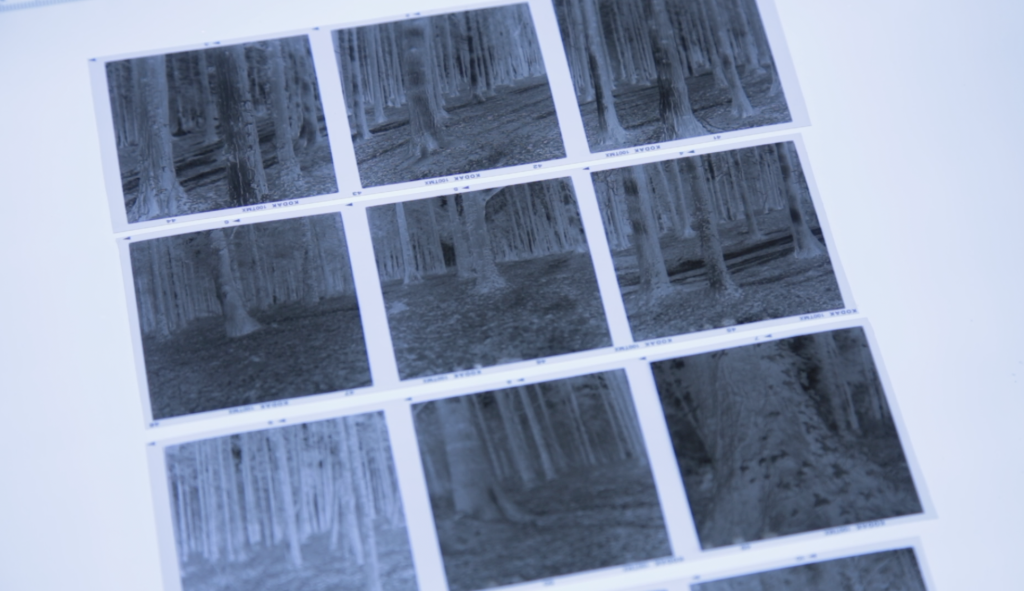

8×8 Print on Kentmere VC Select Paper. Turned out nice after a bit of split grading.
And here are the scanned images.


